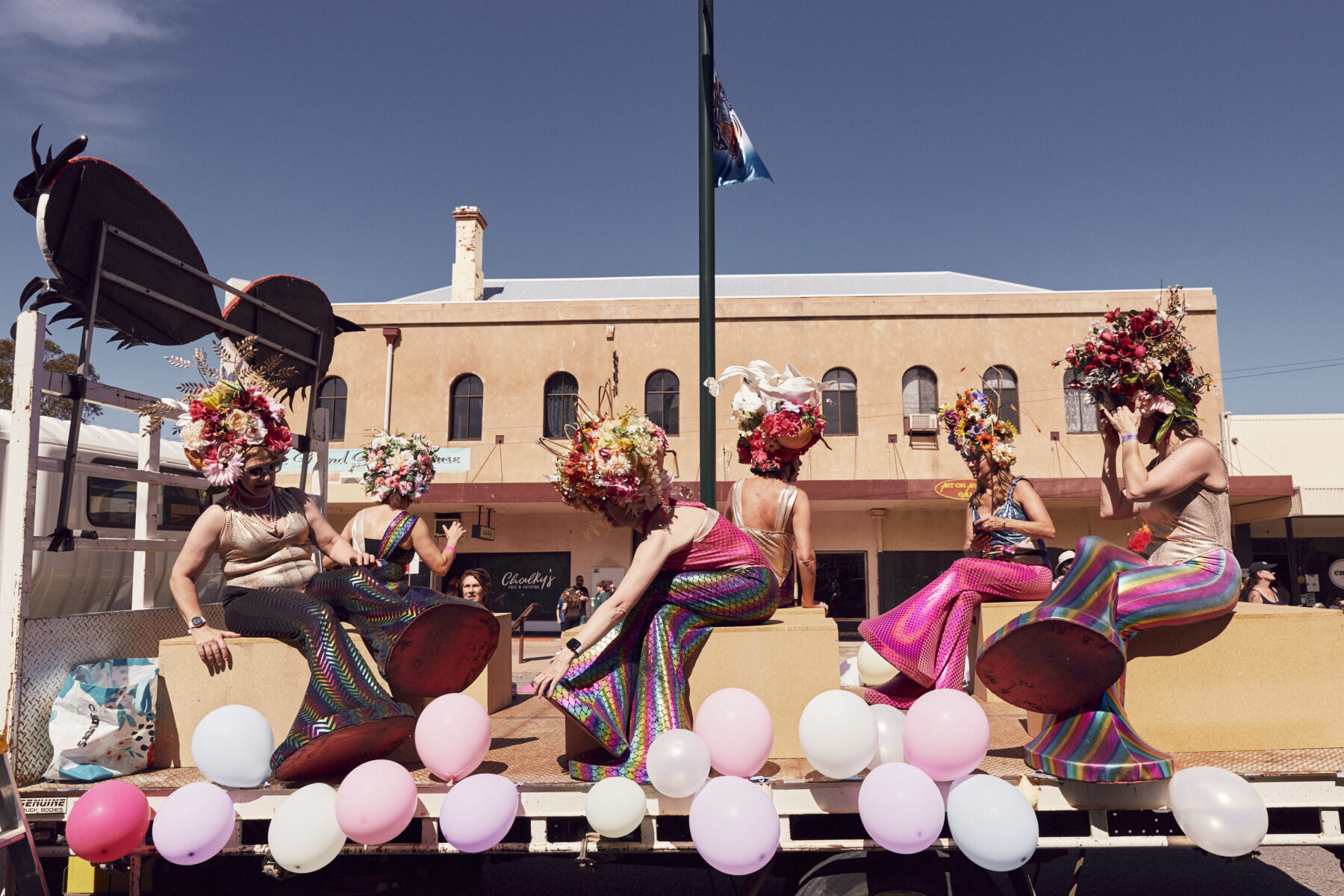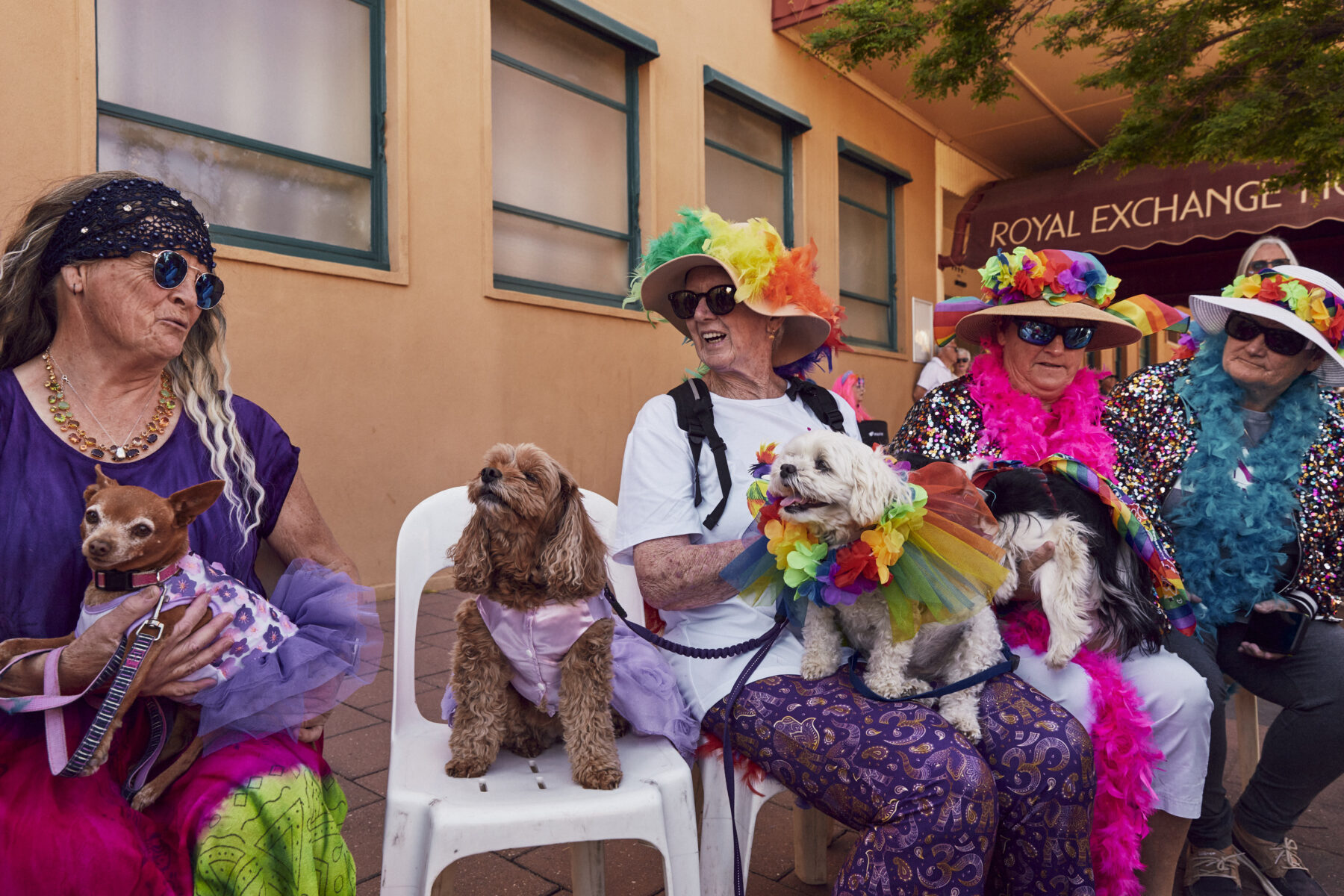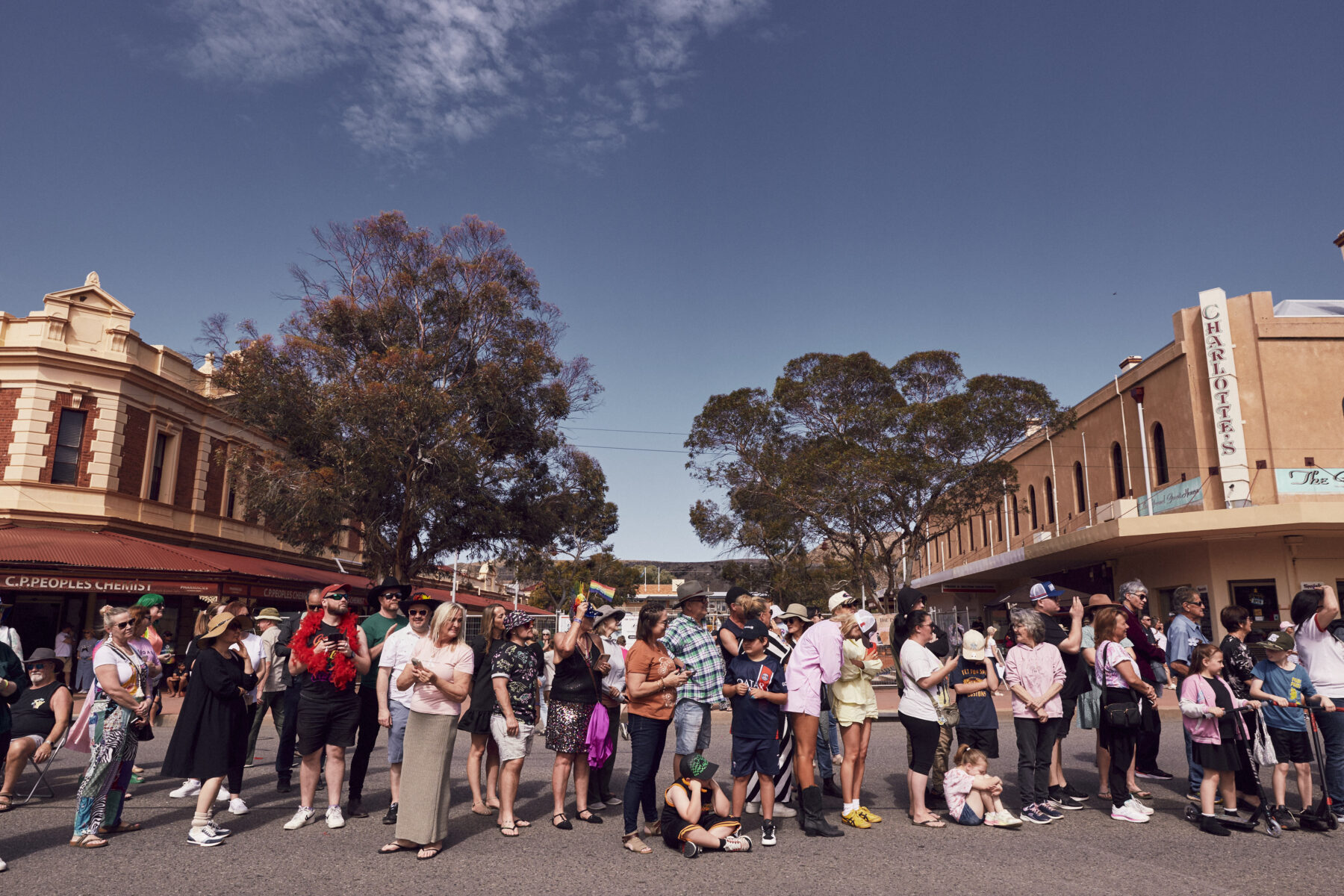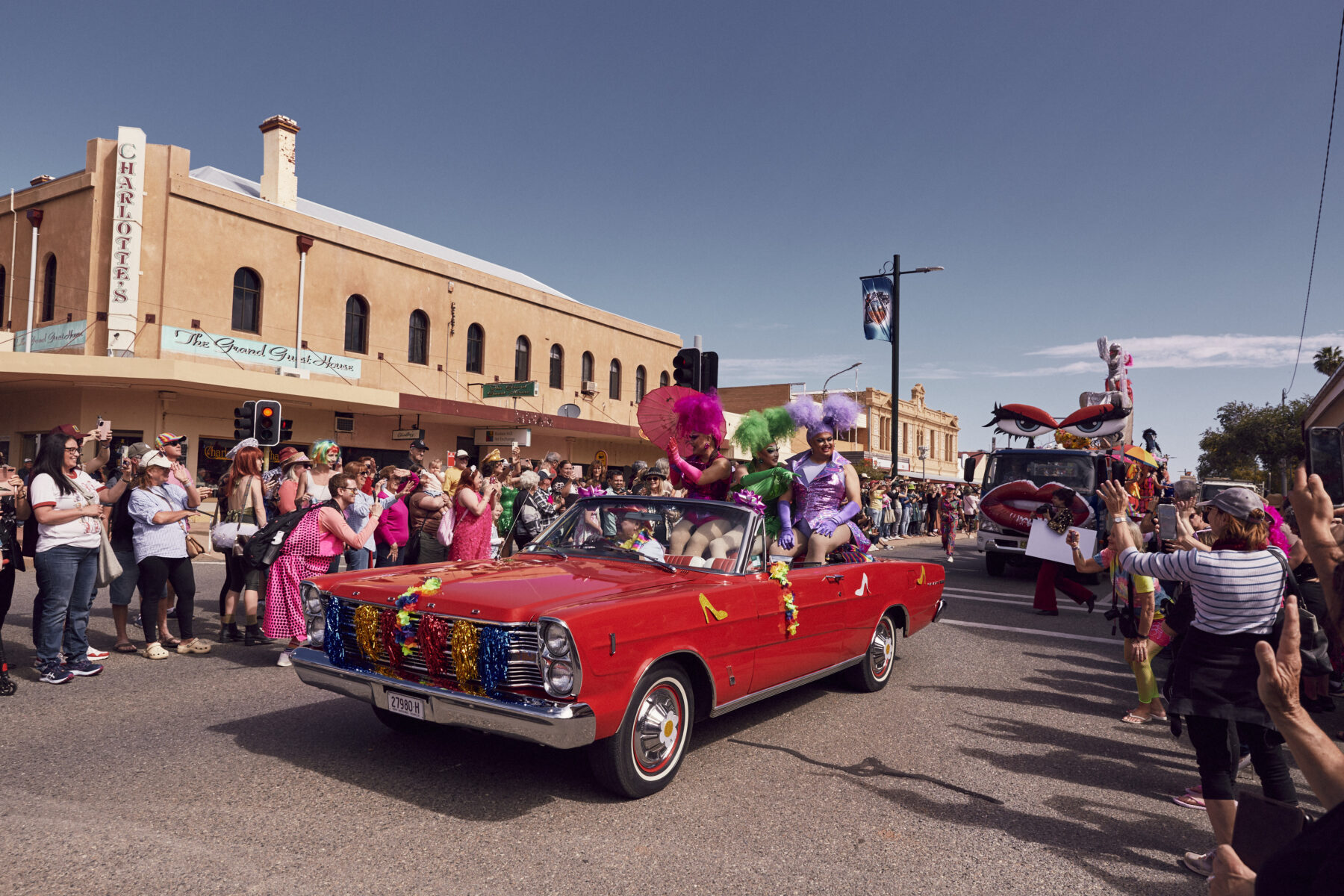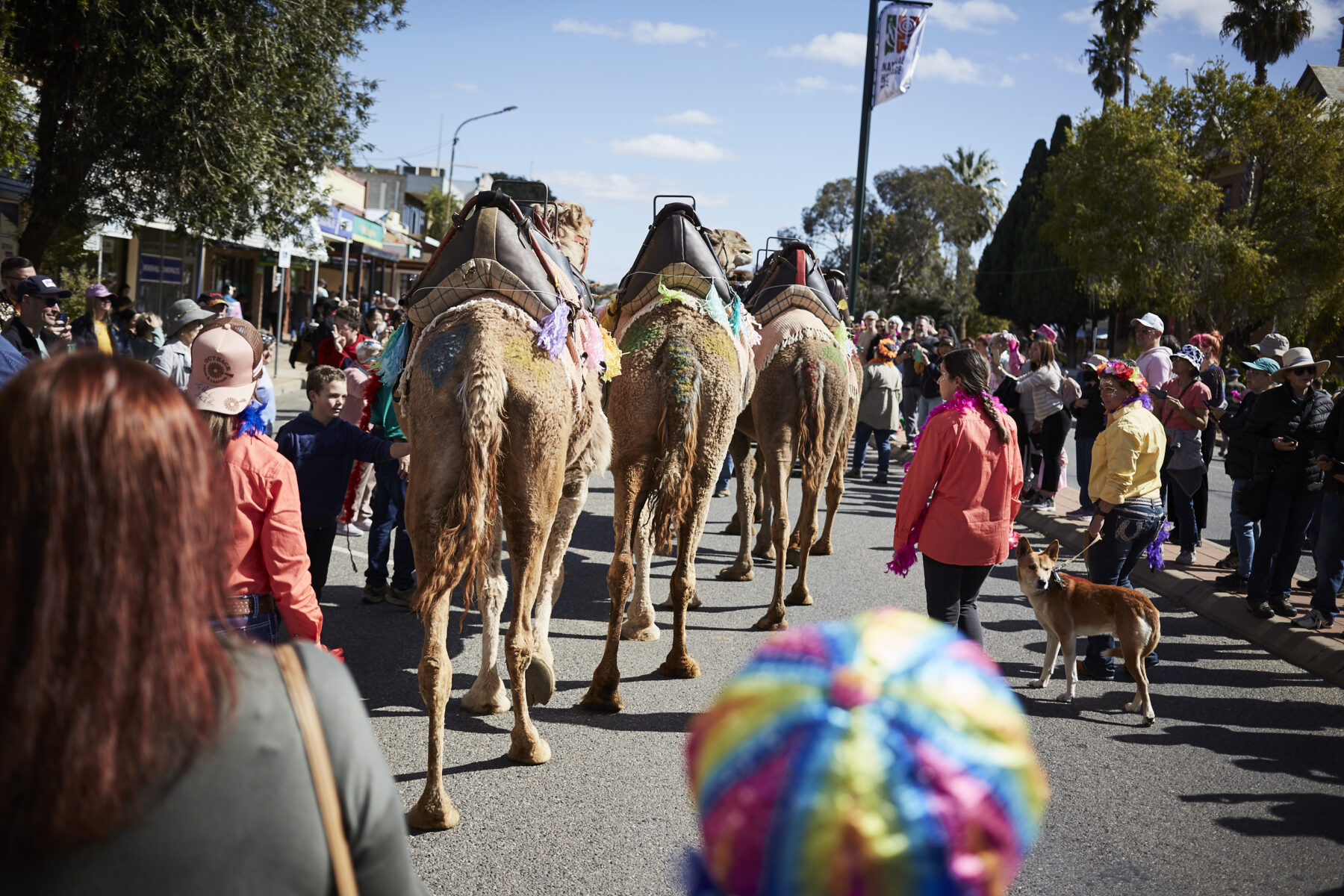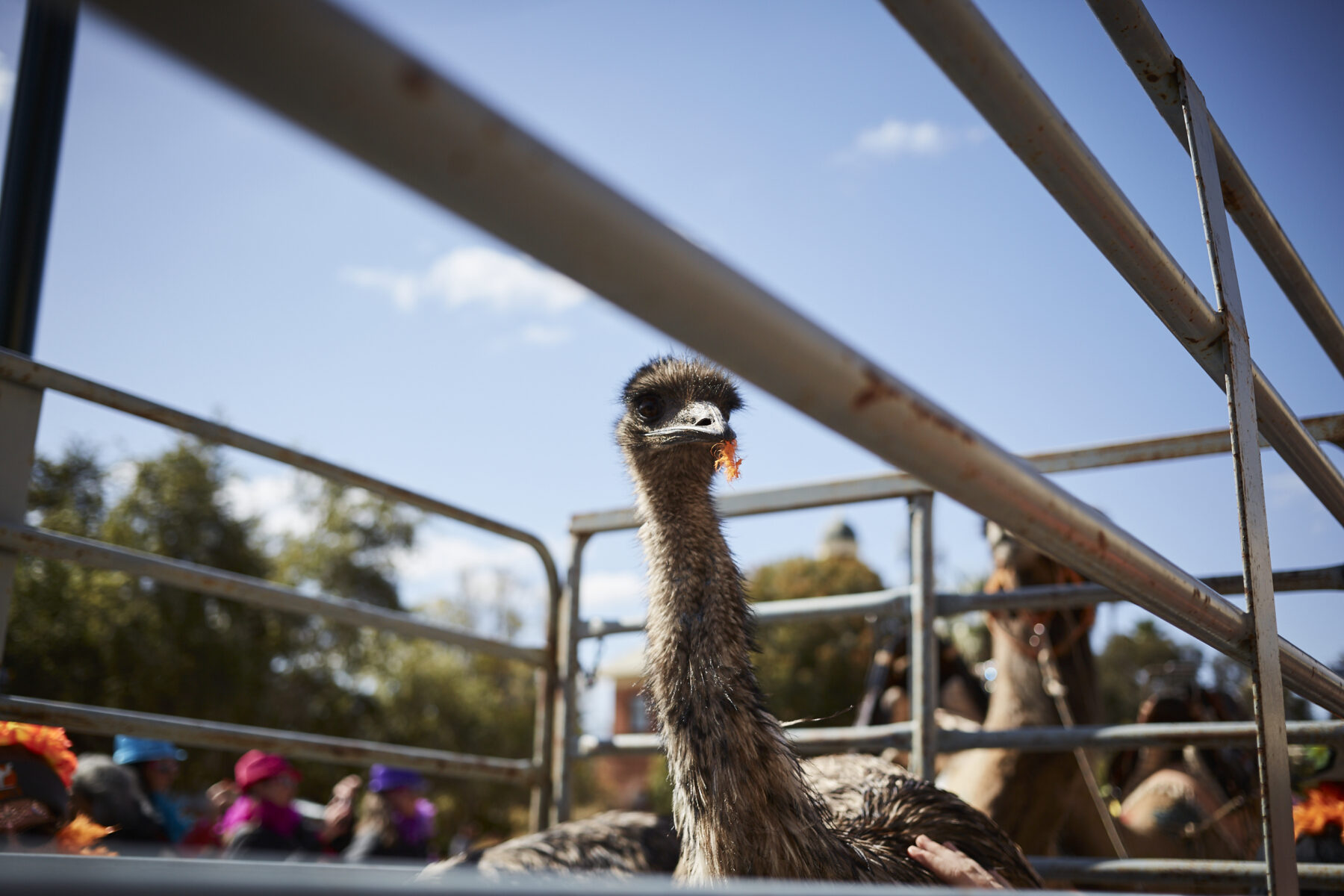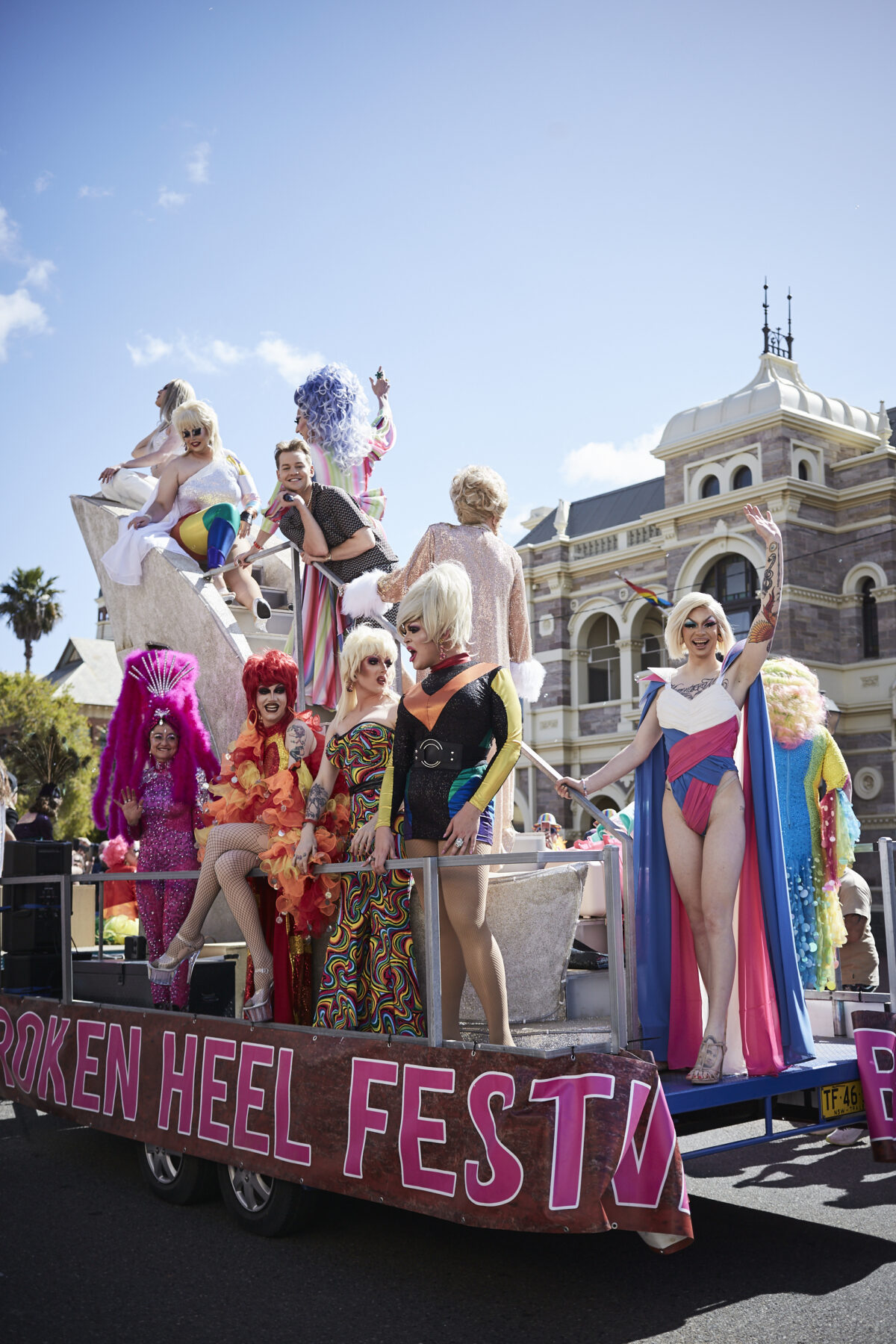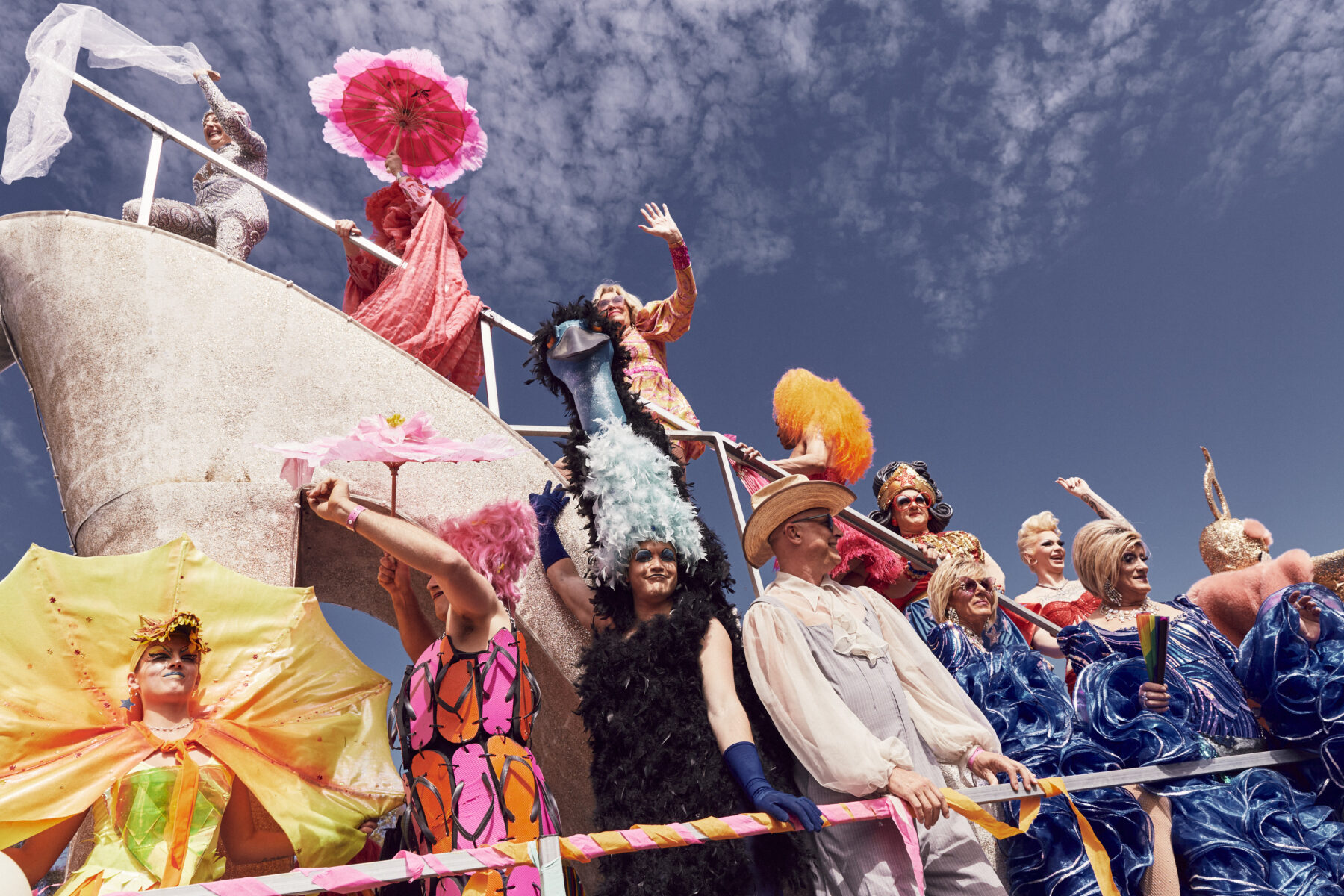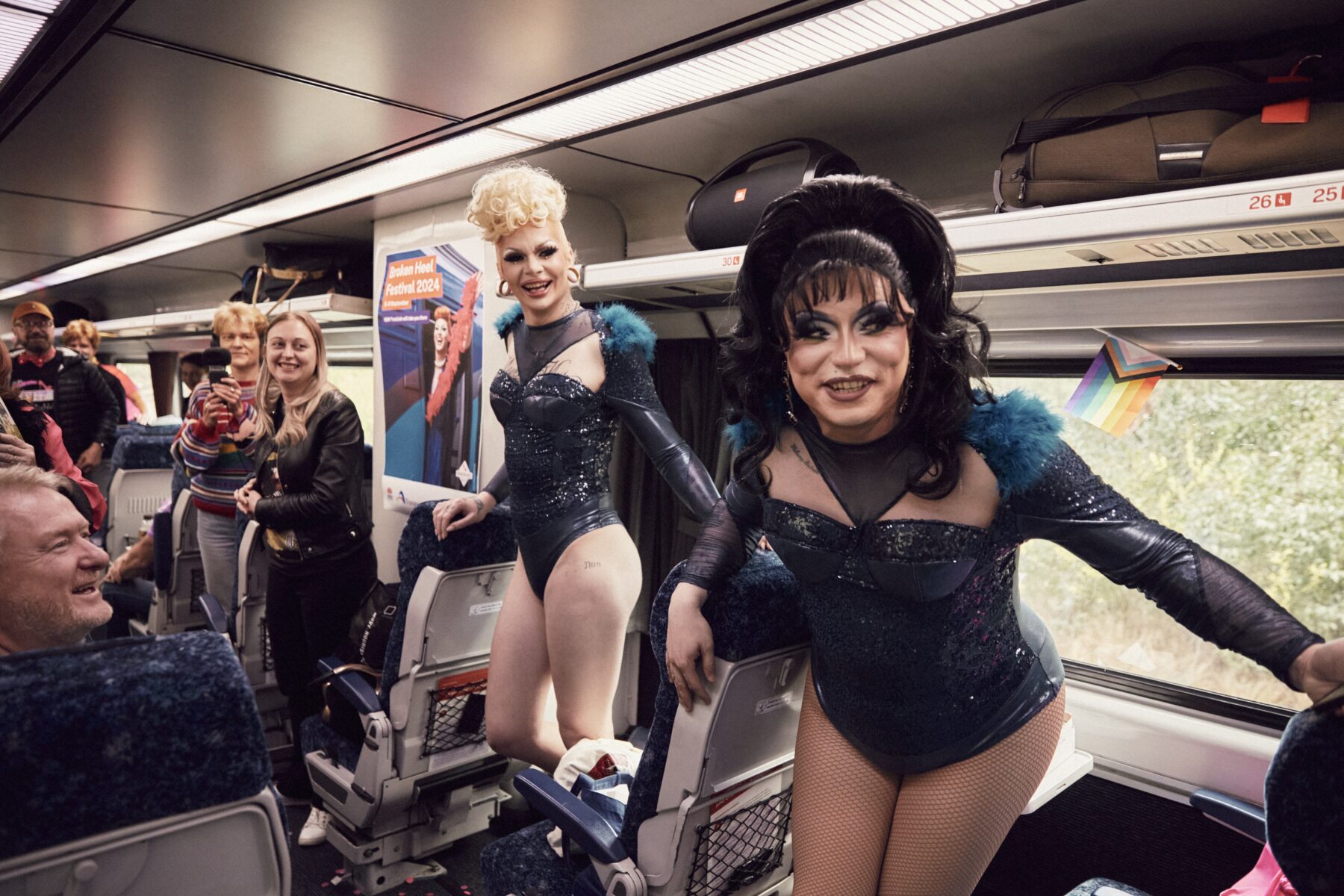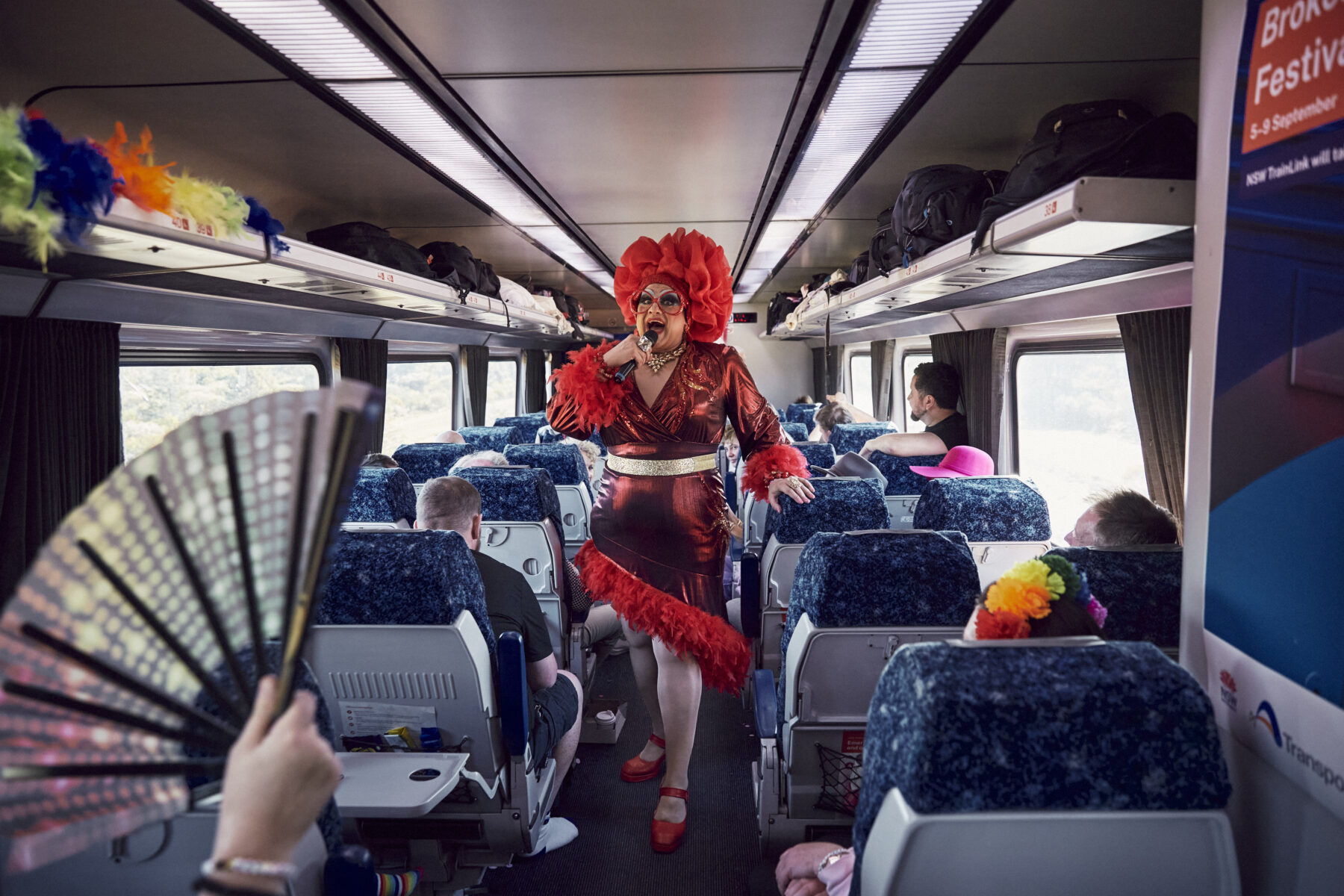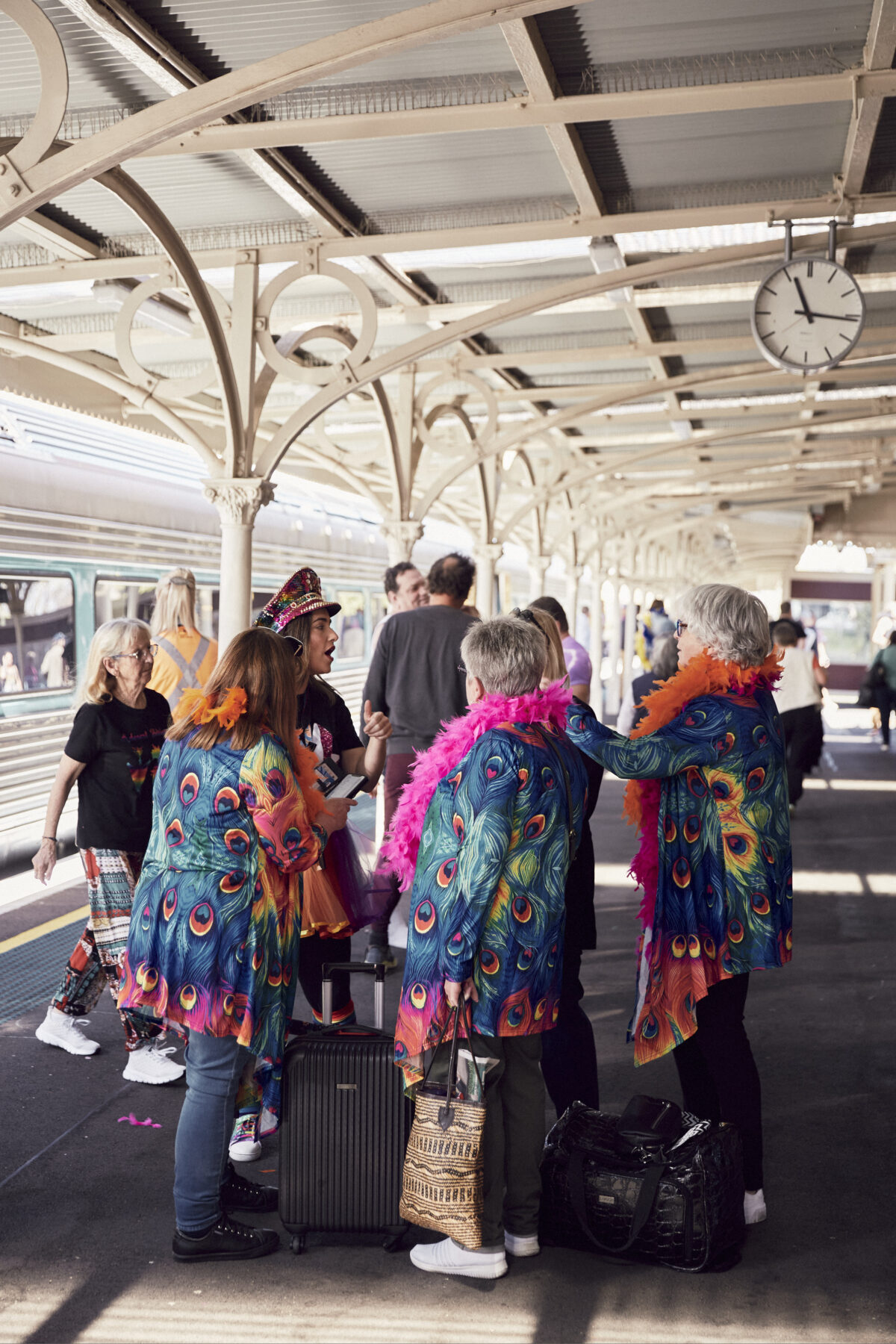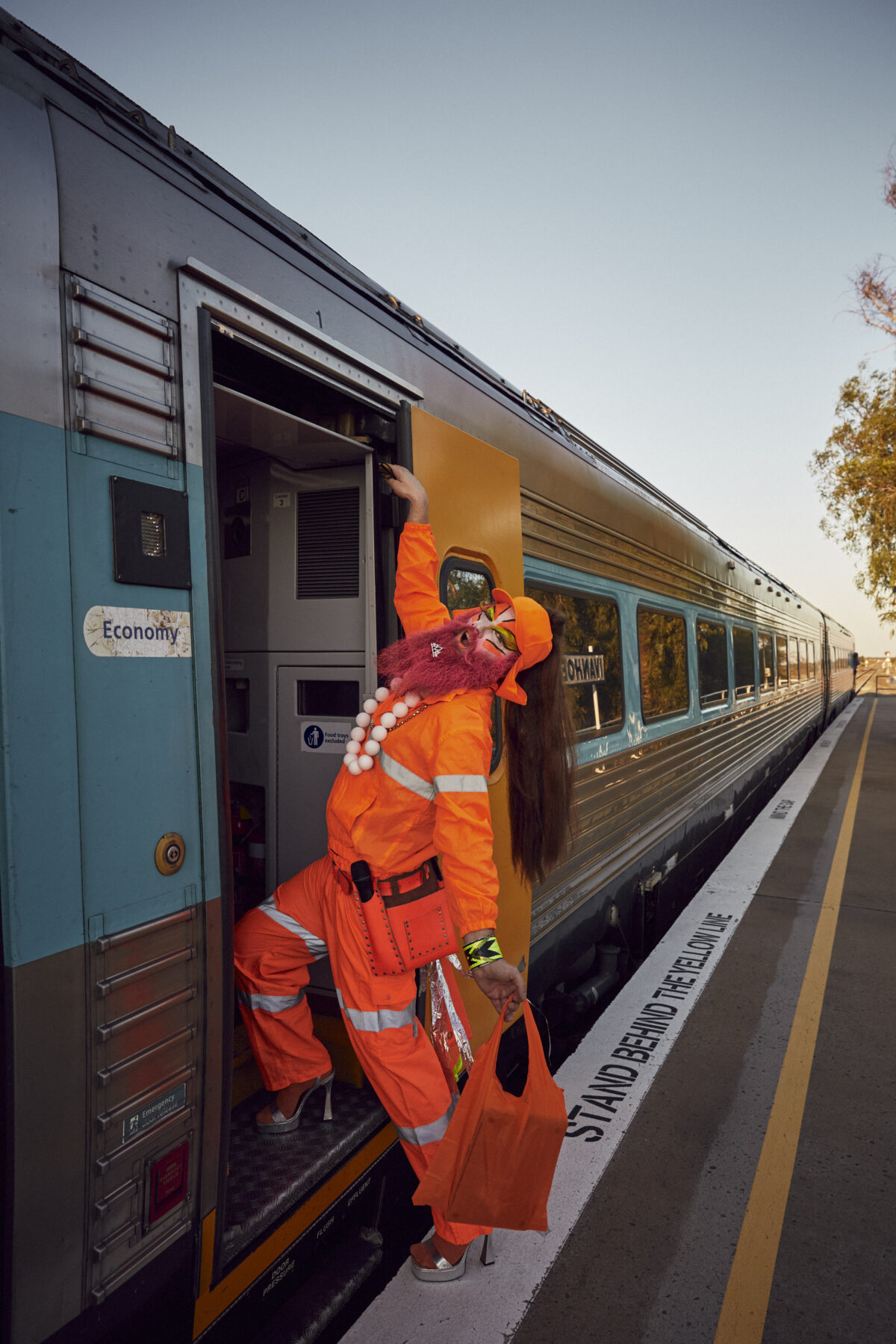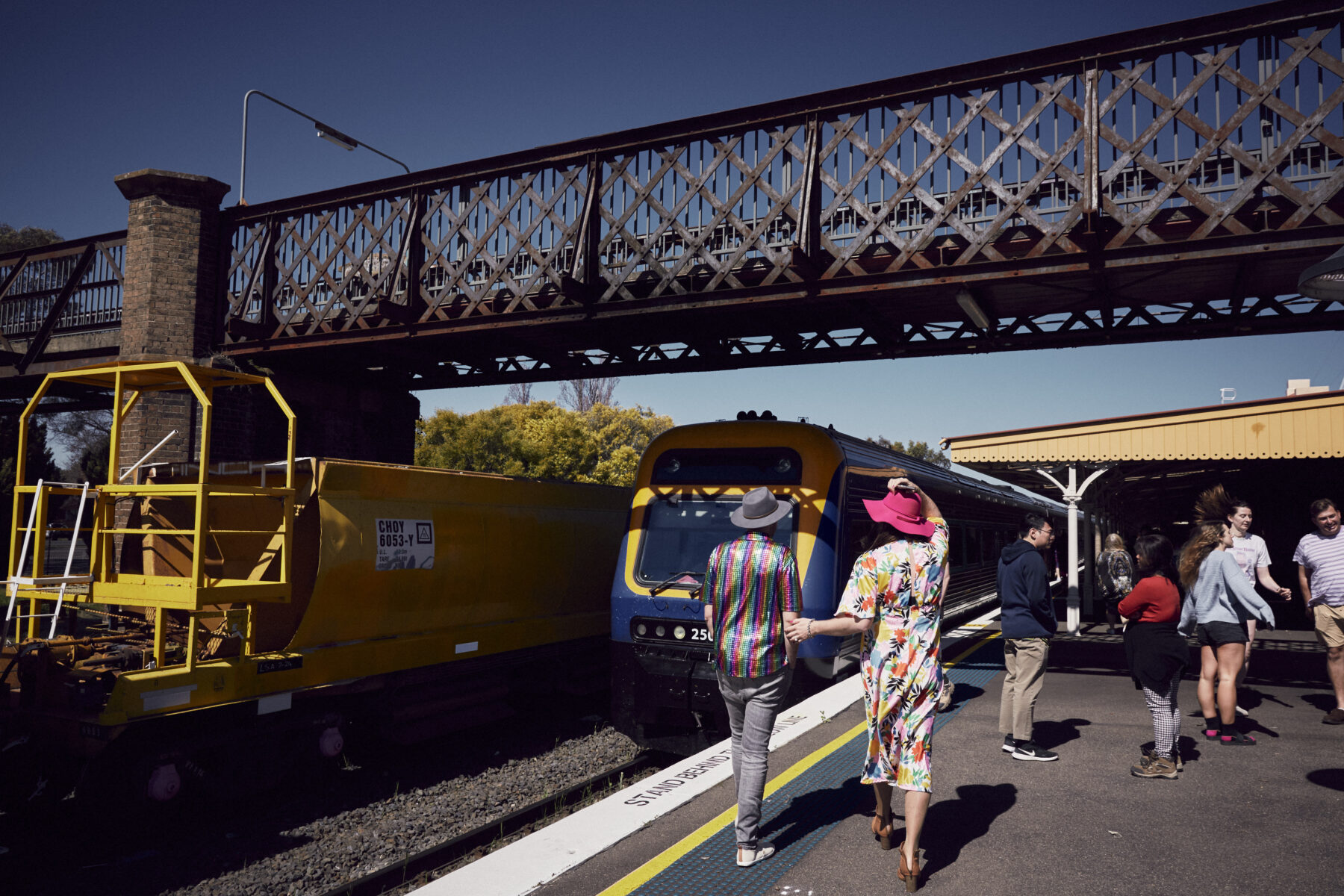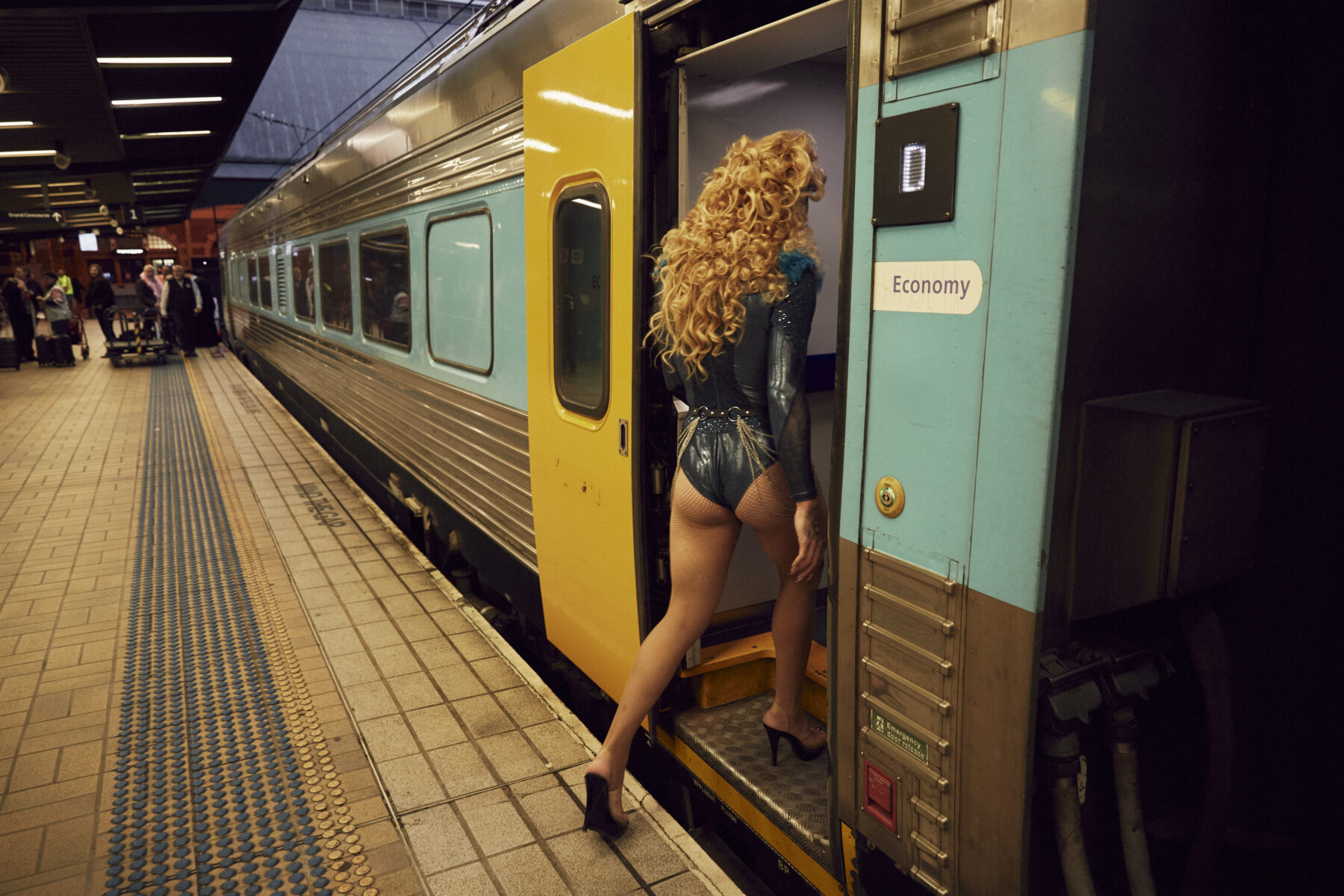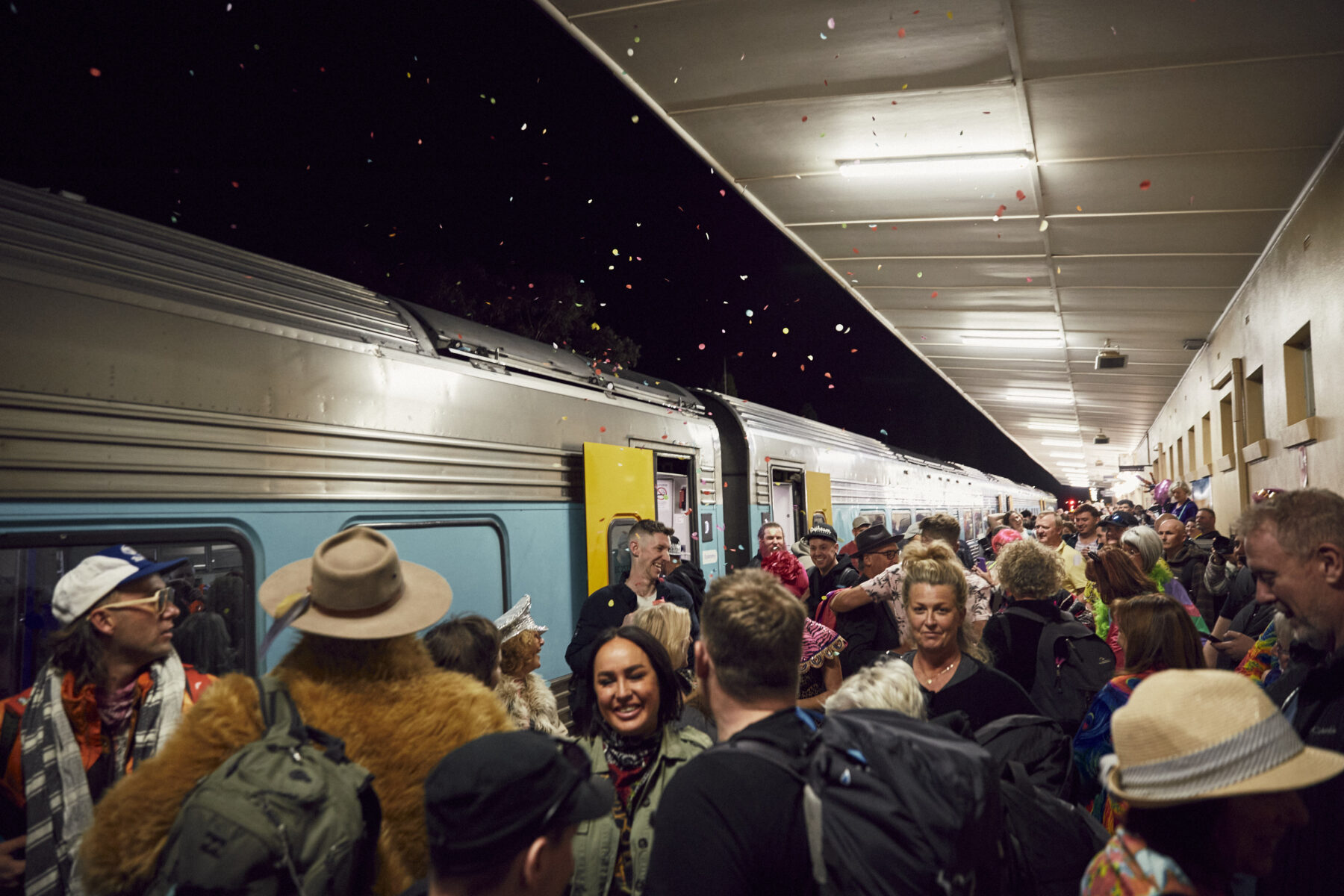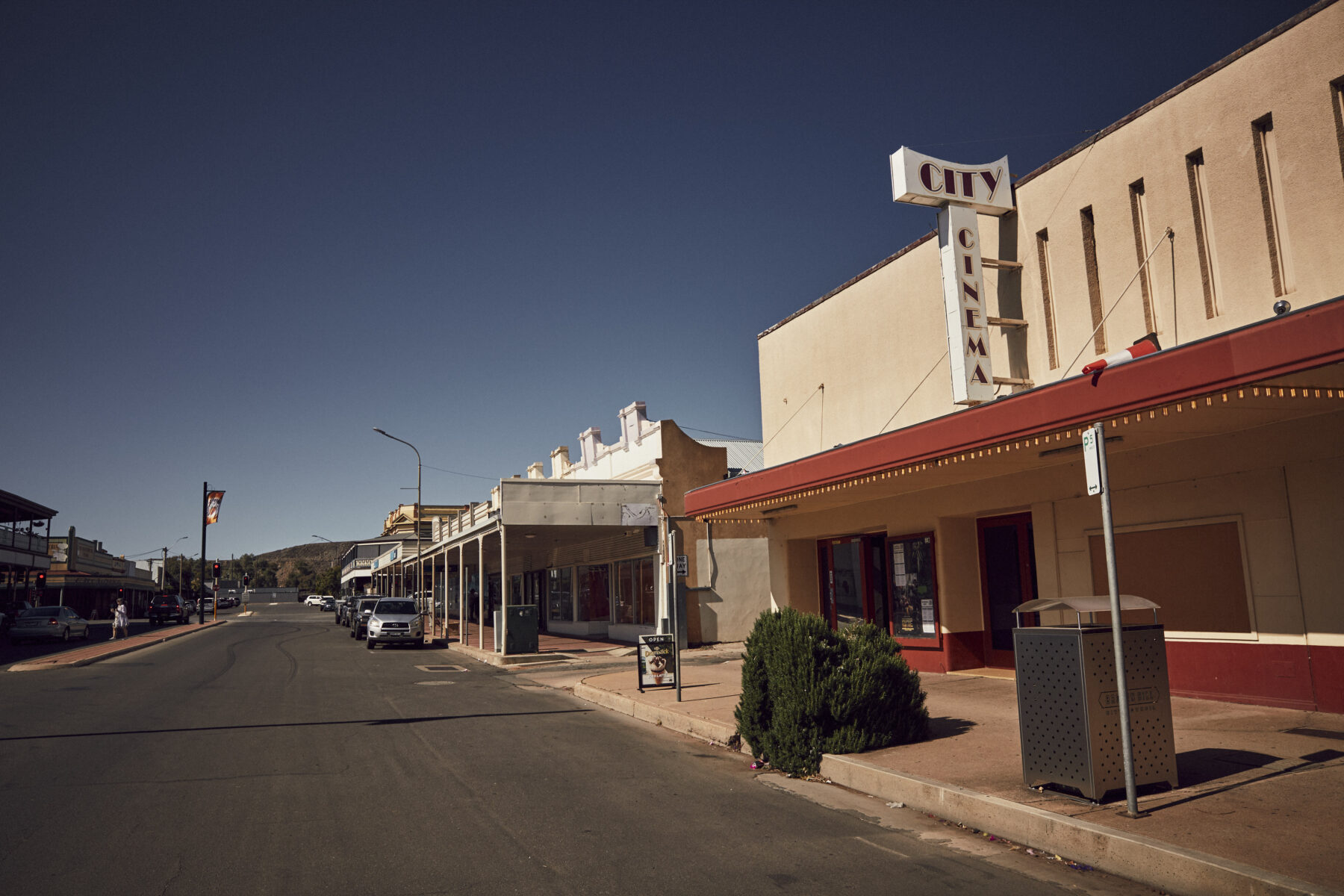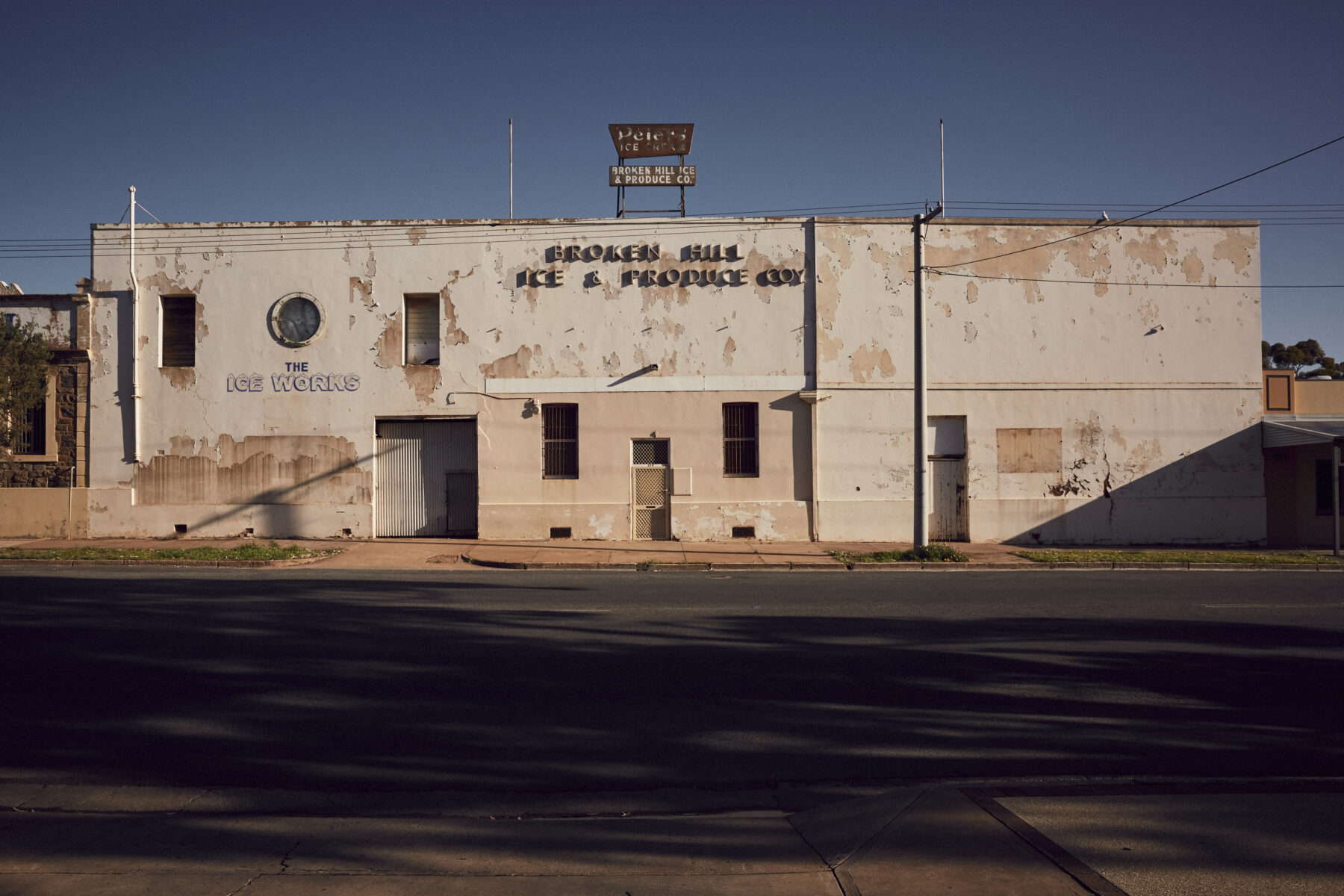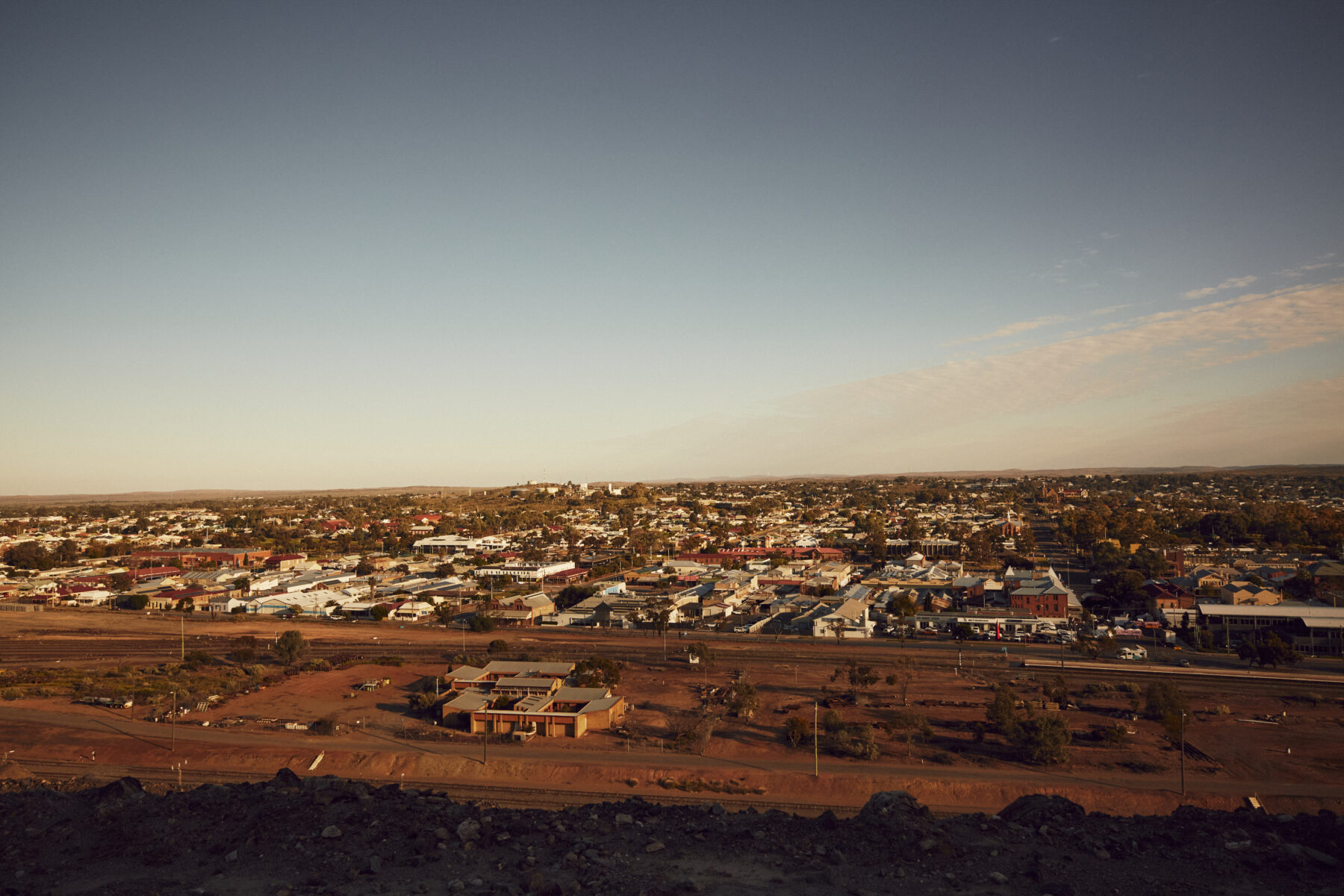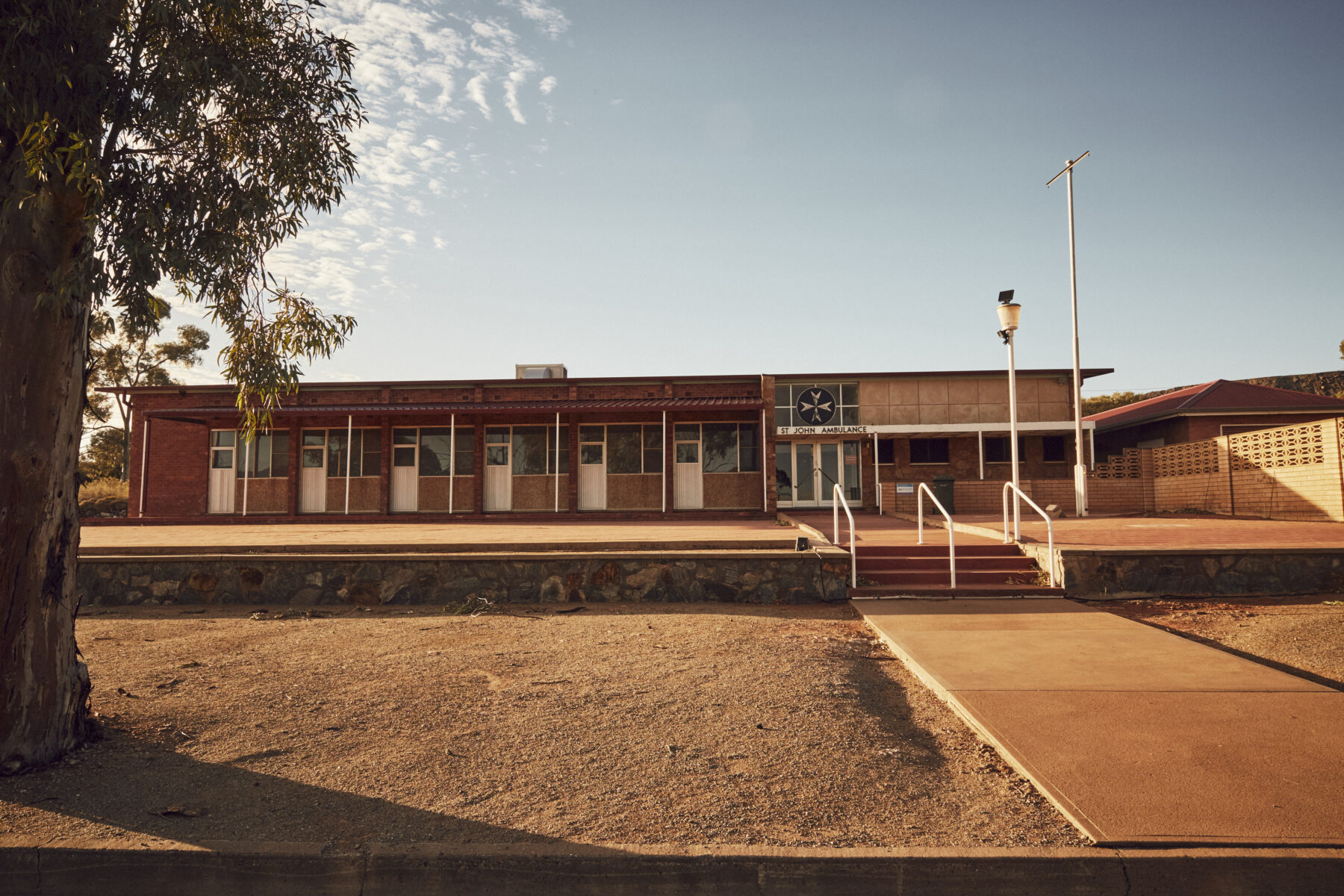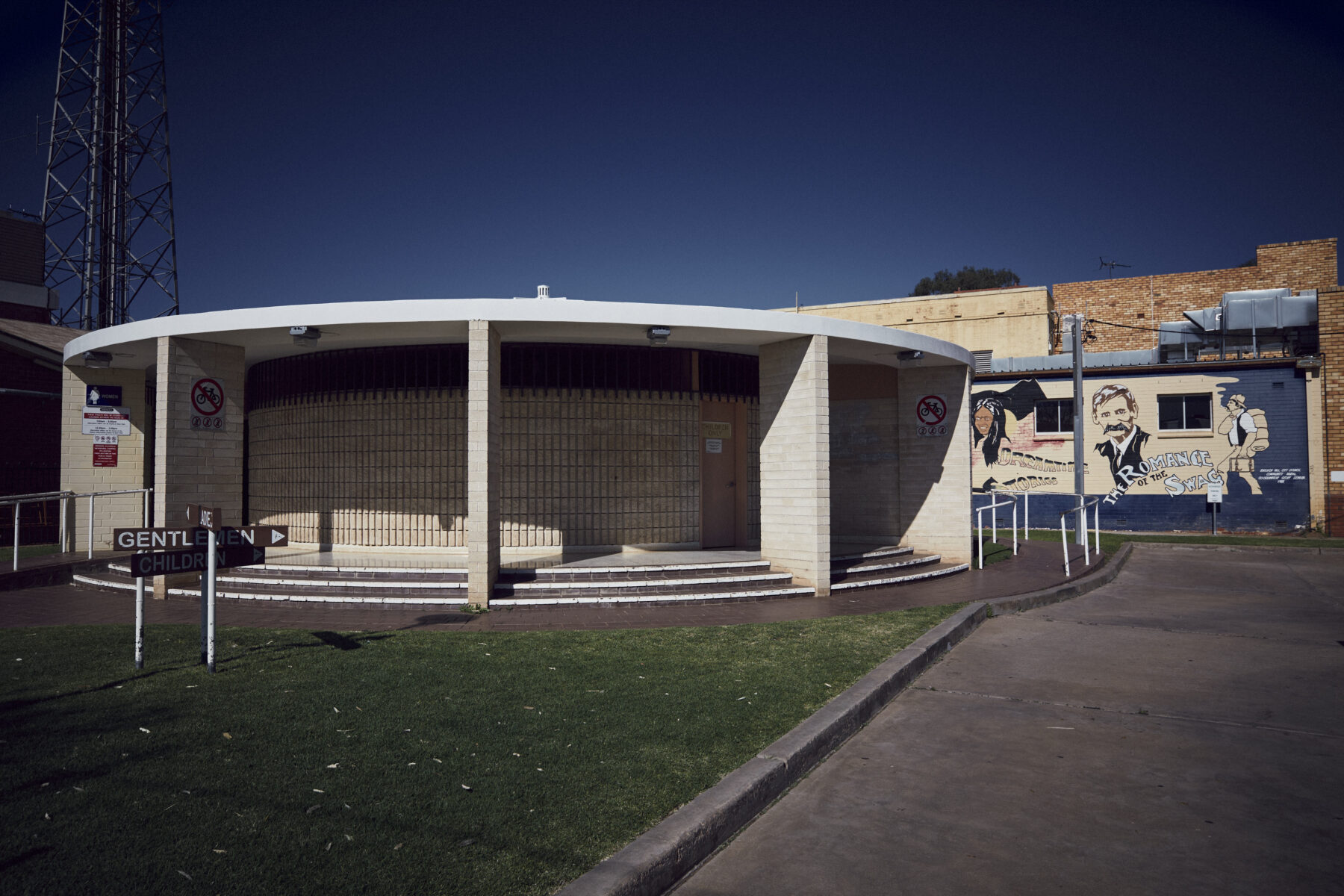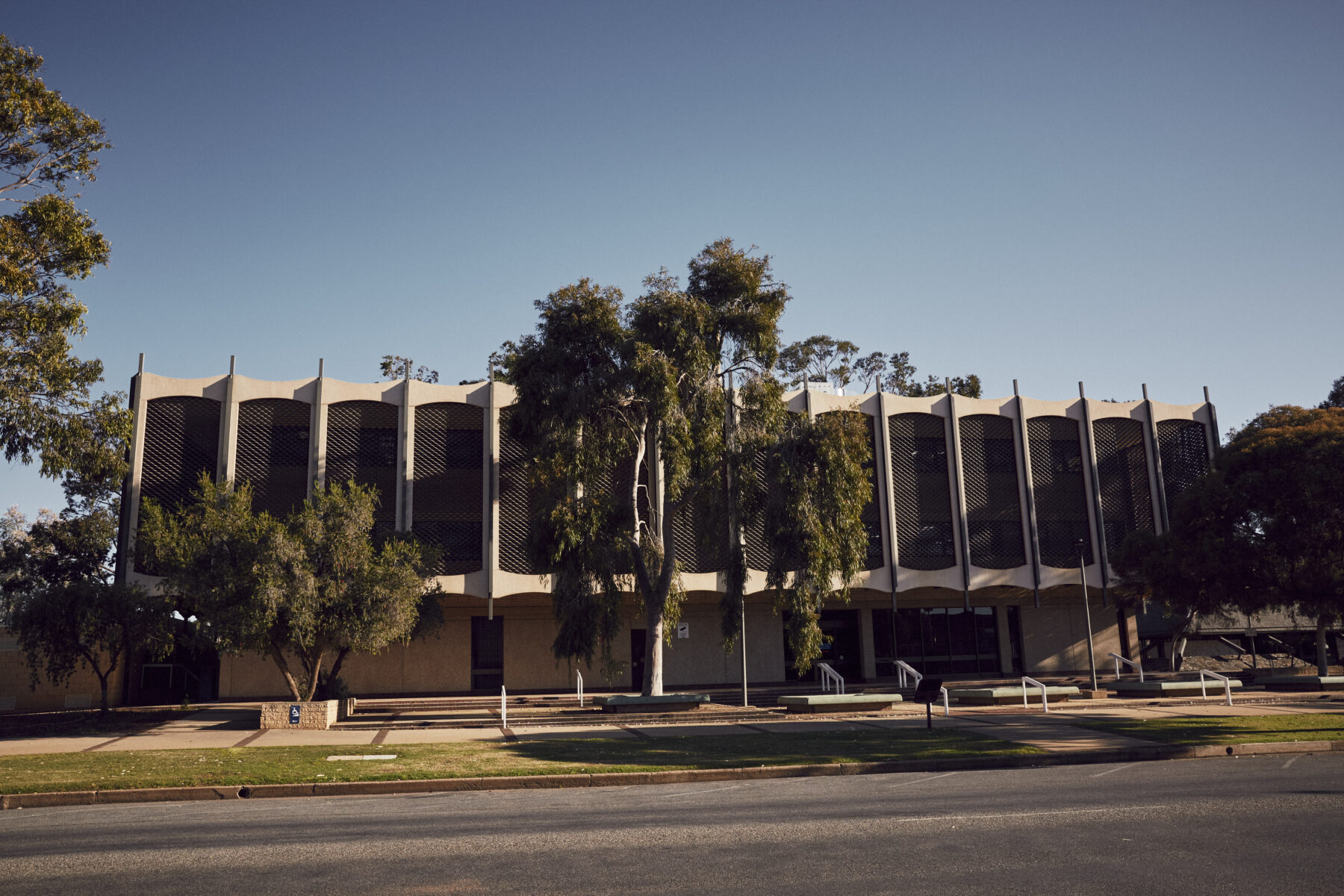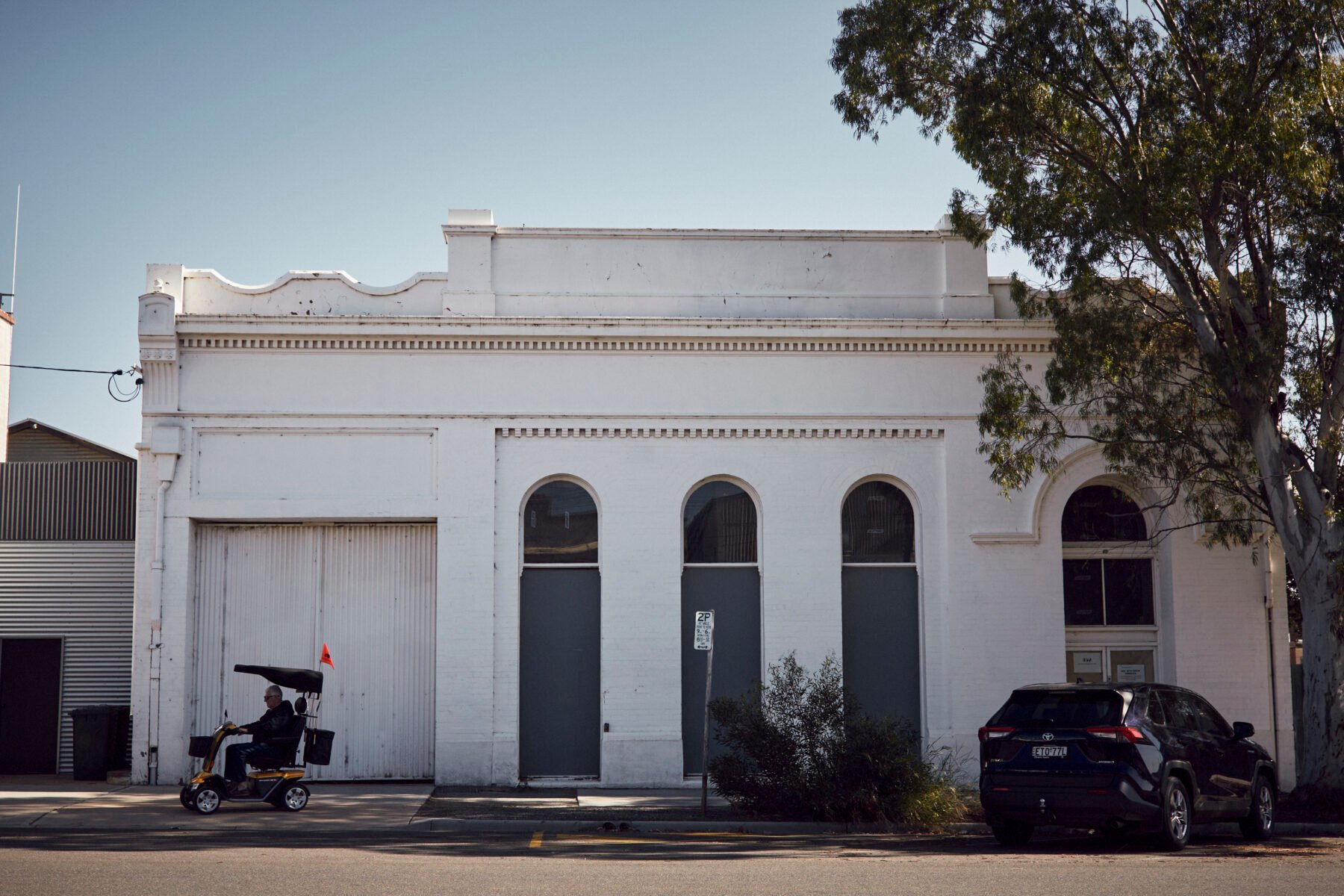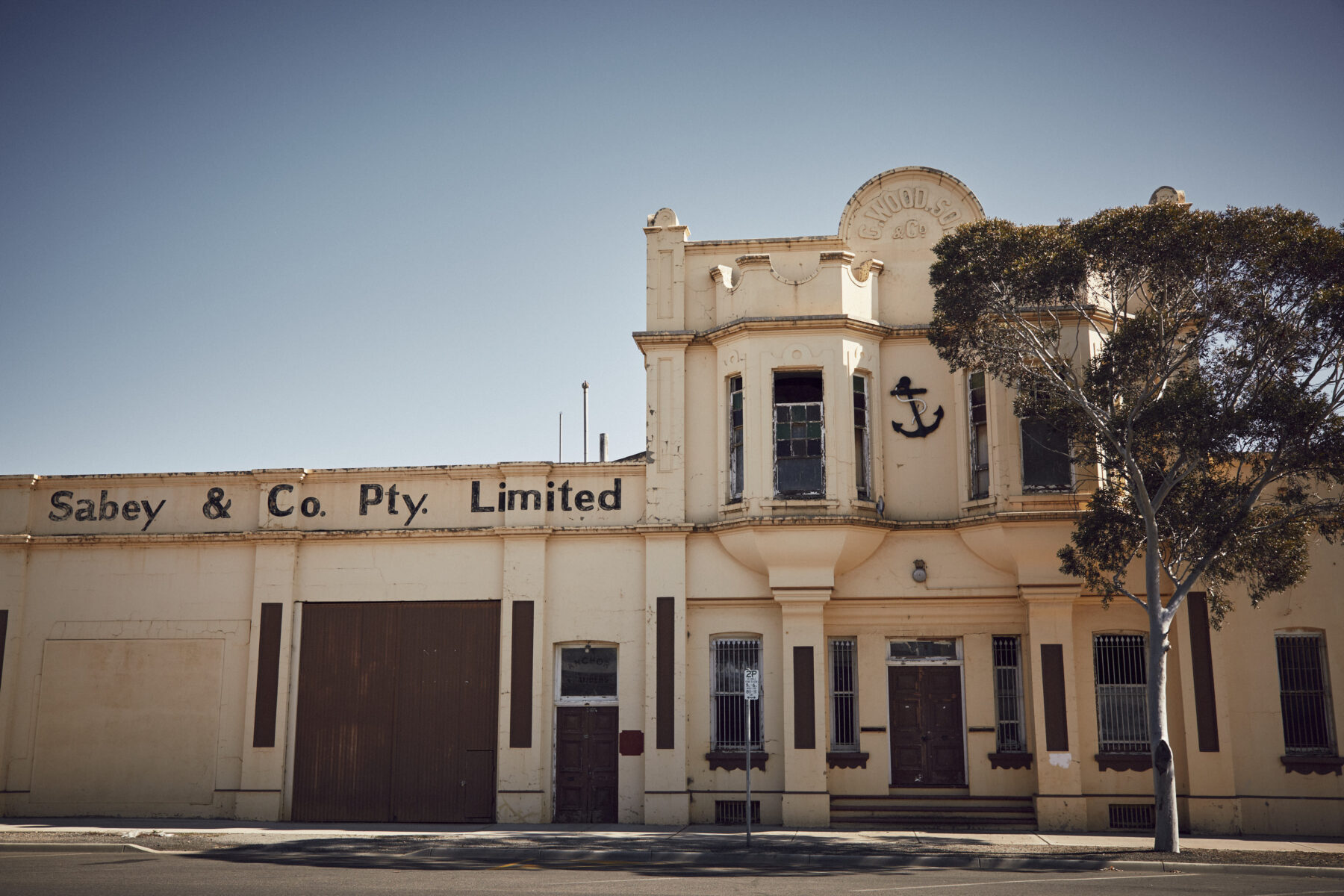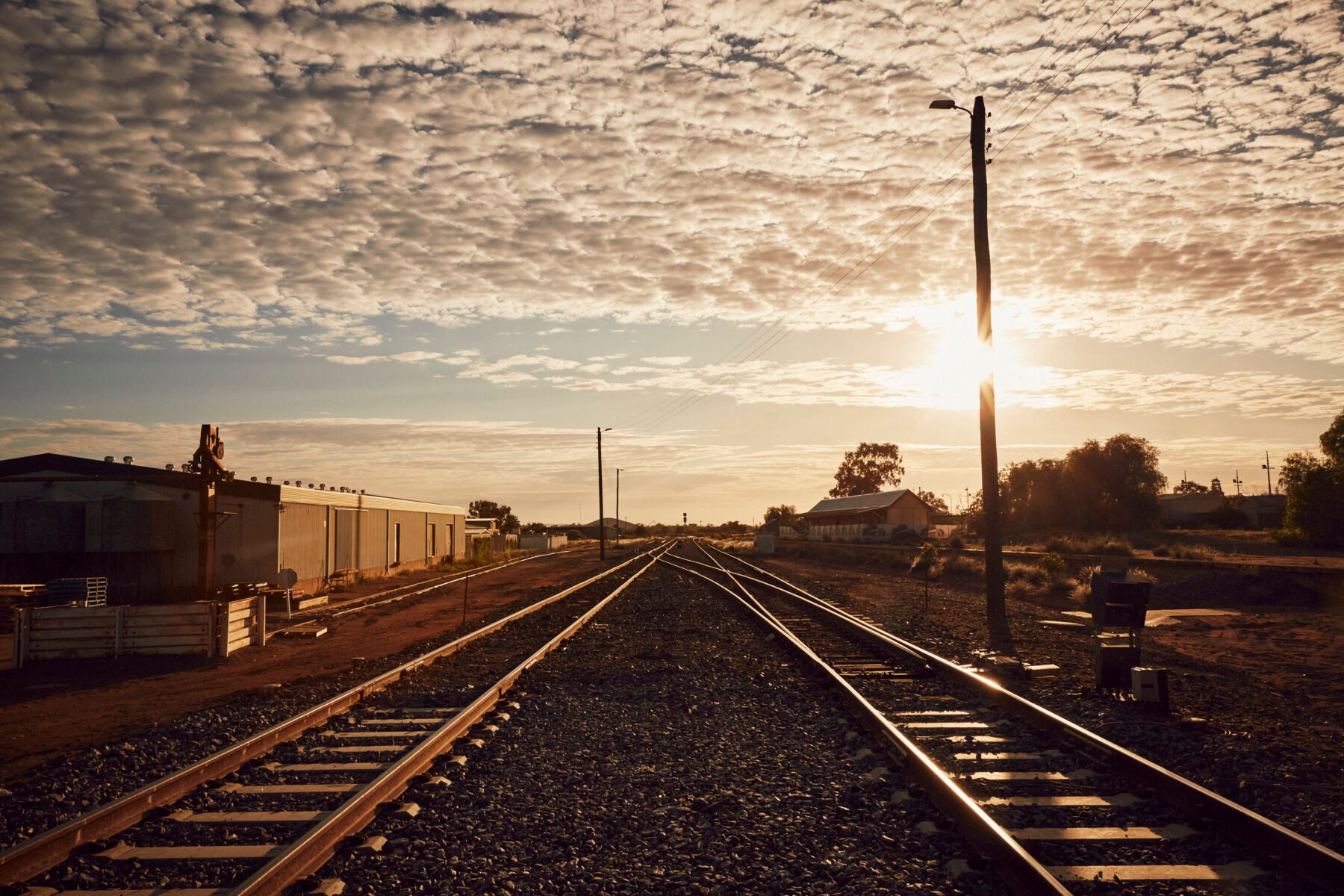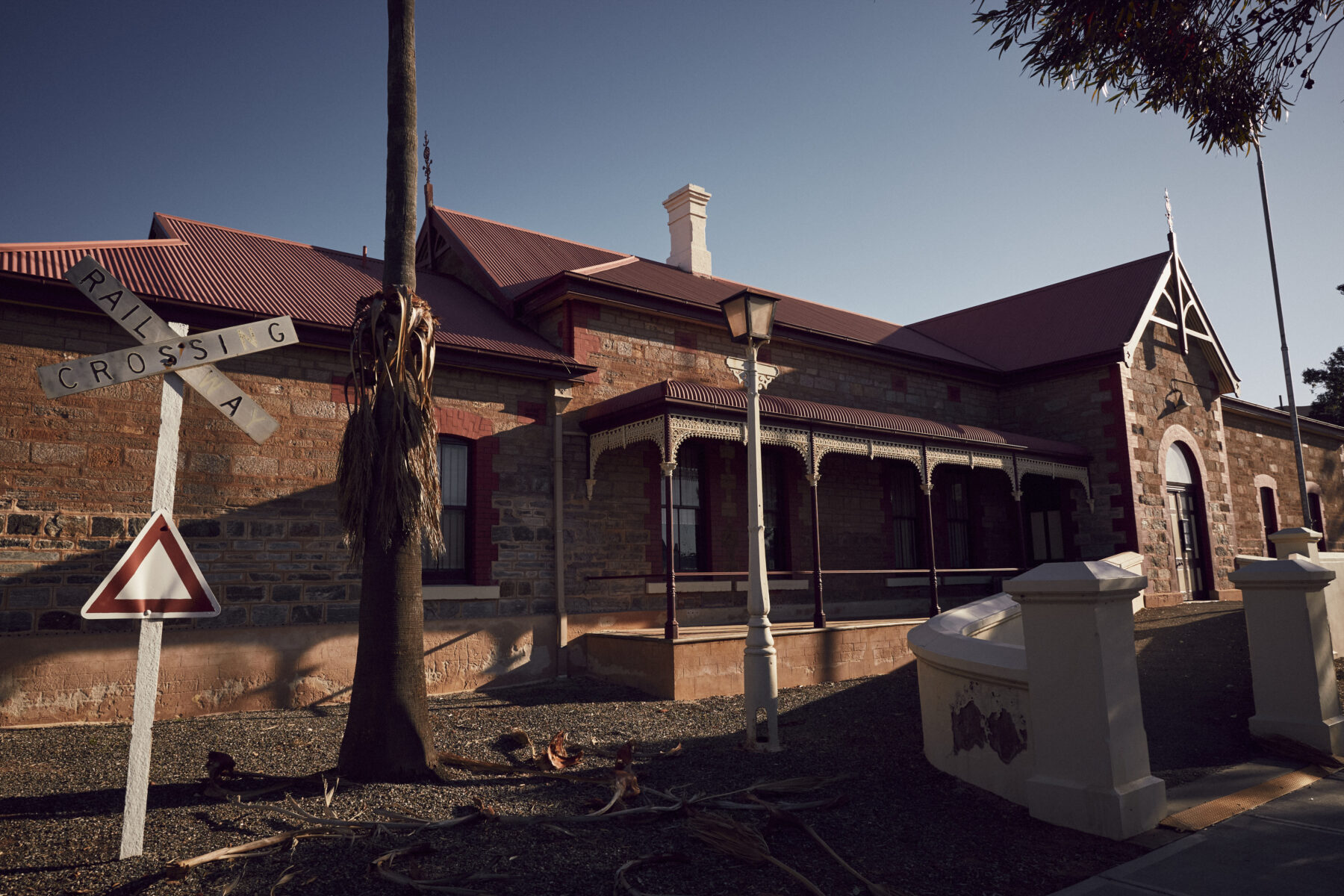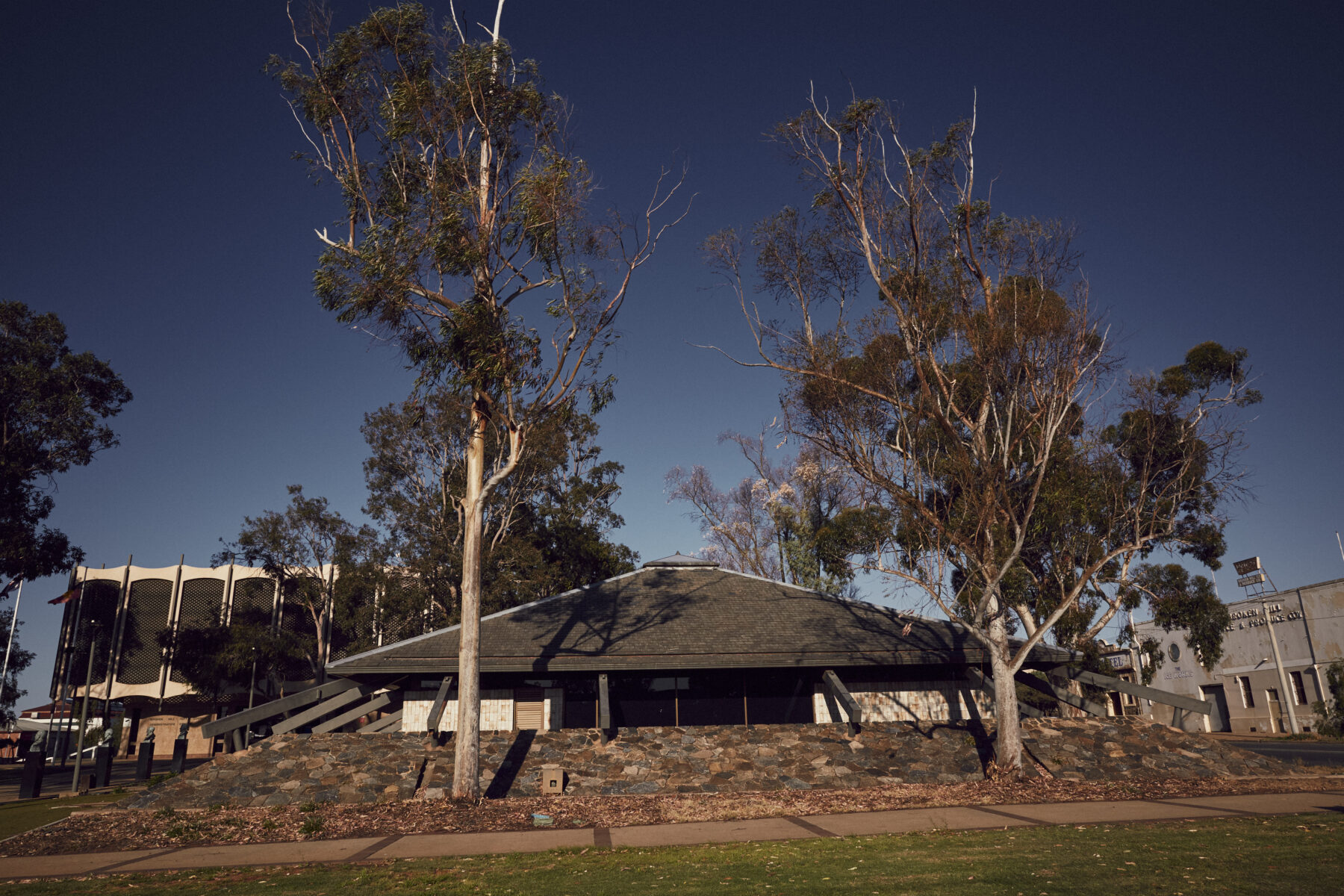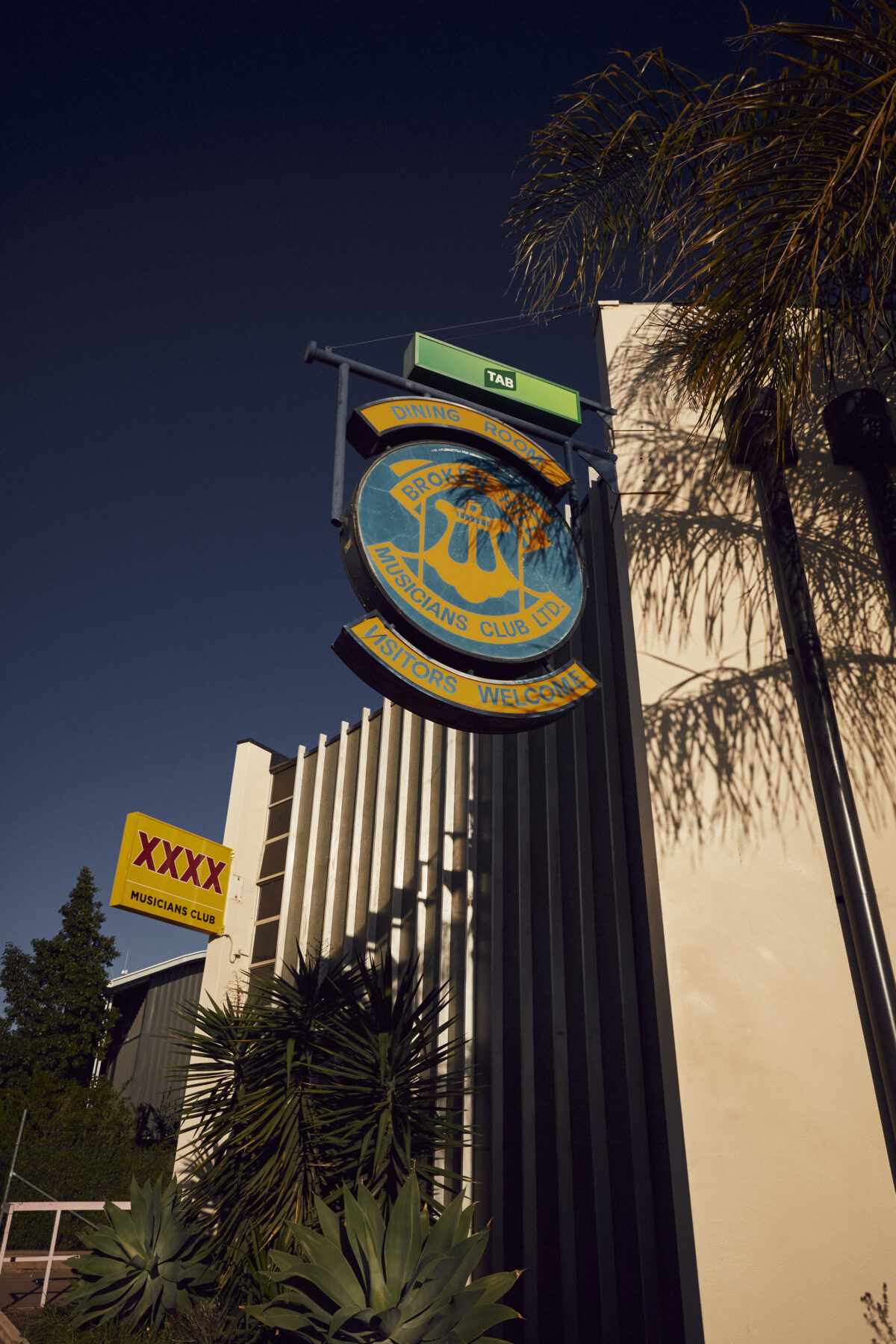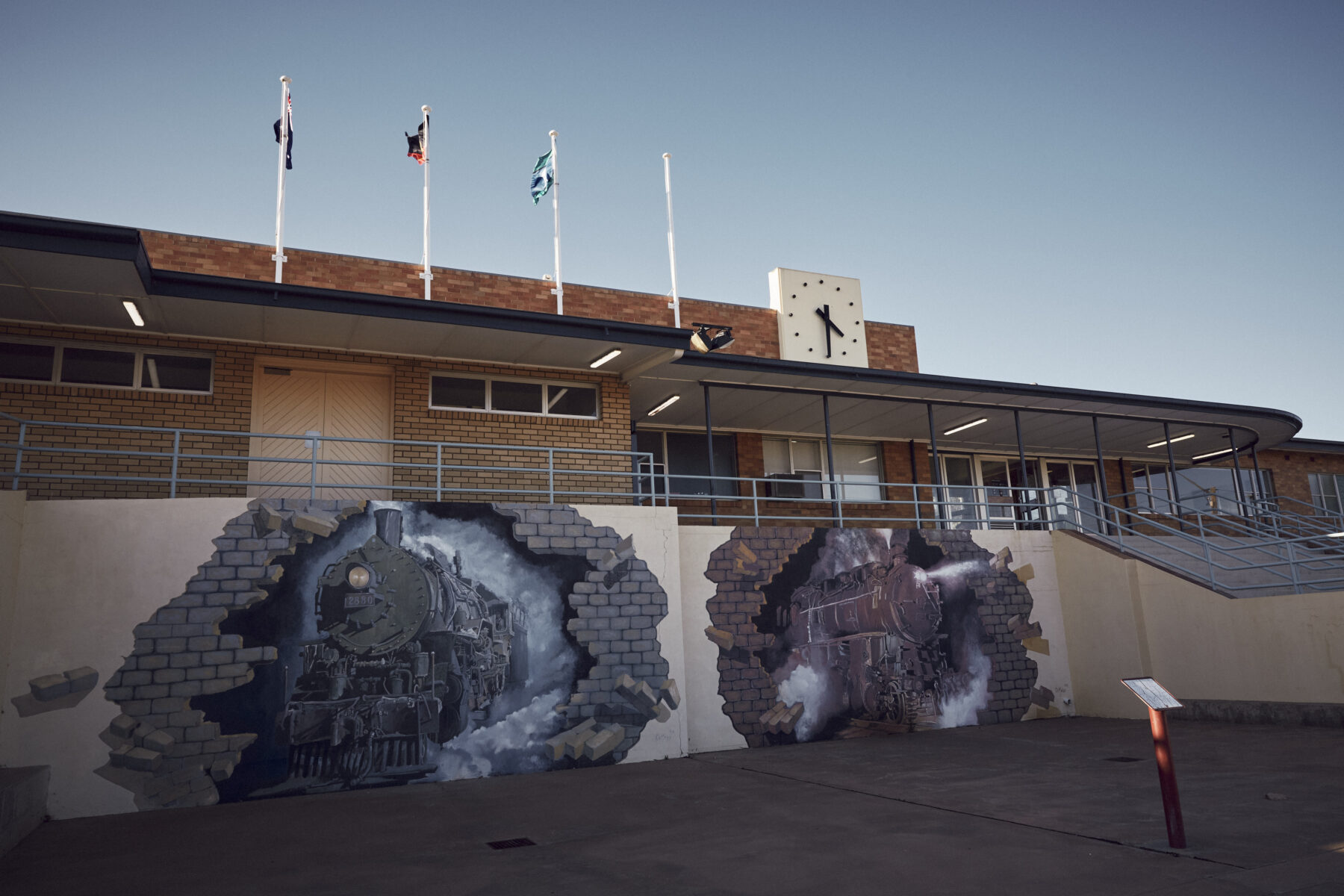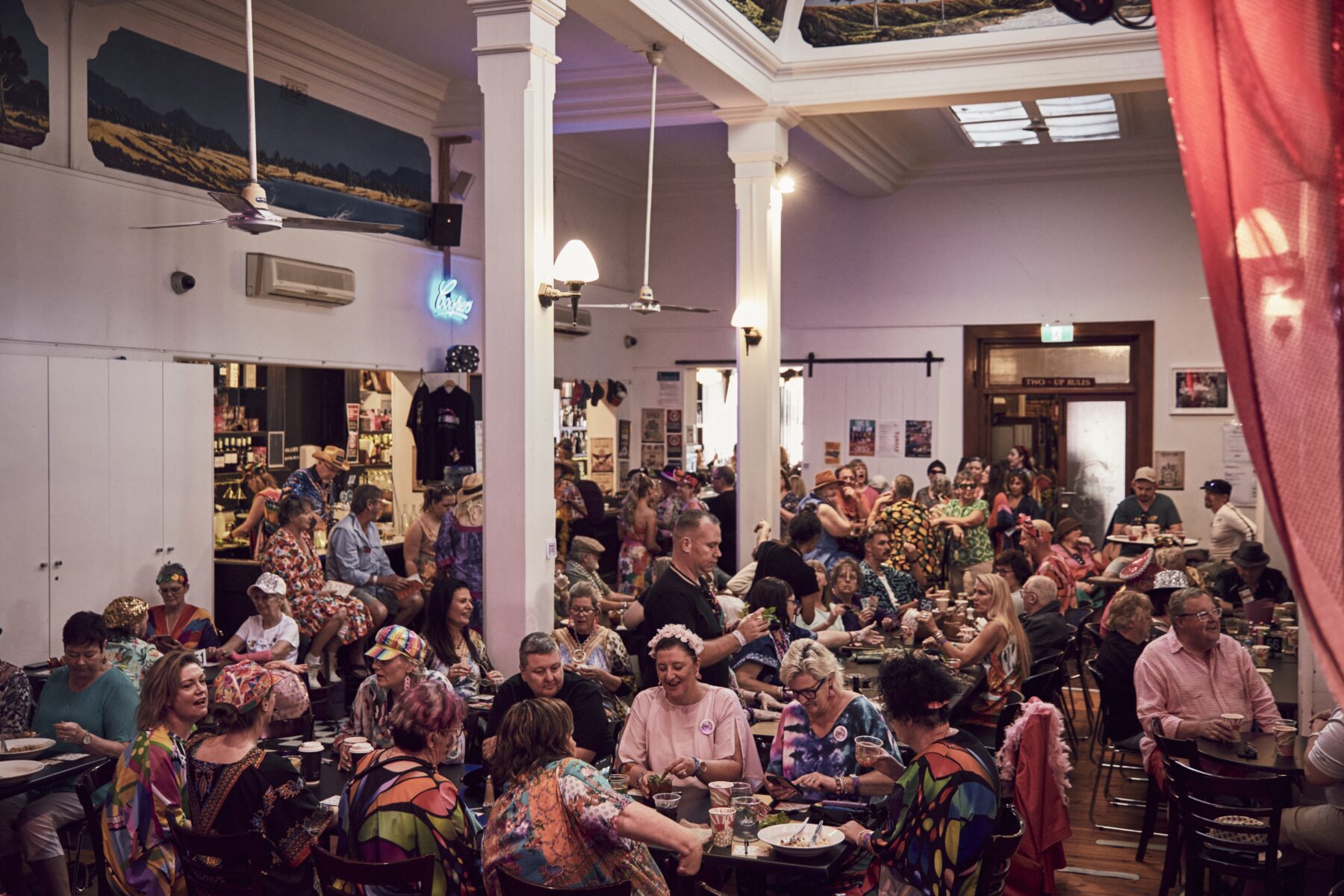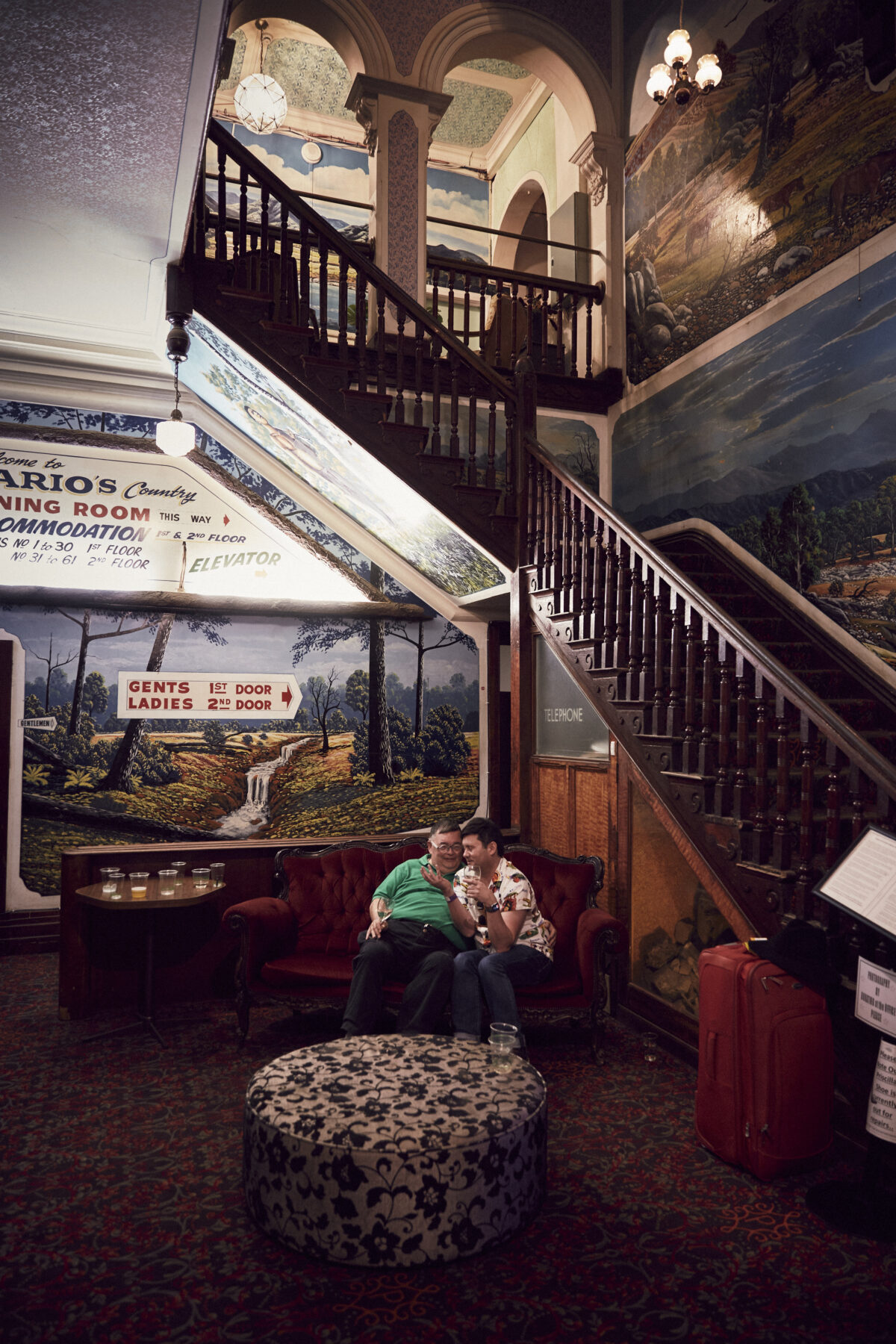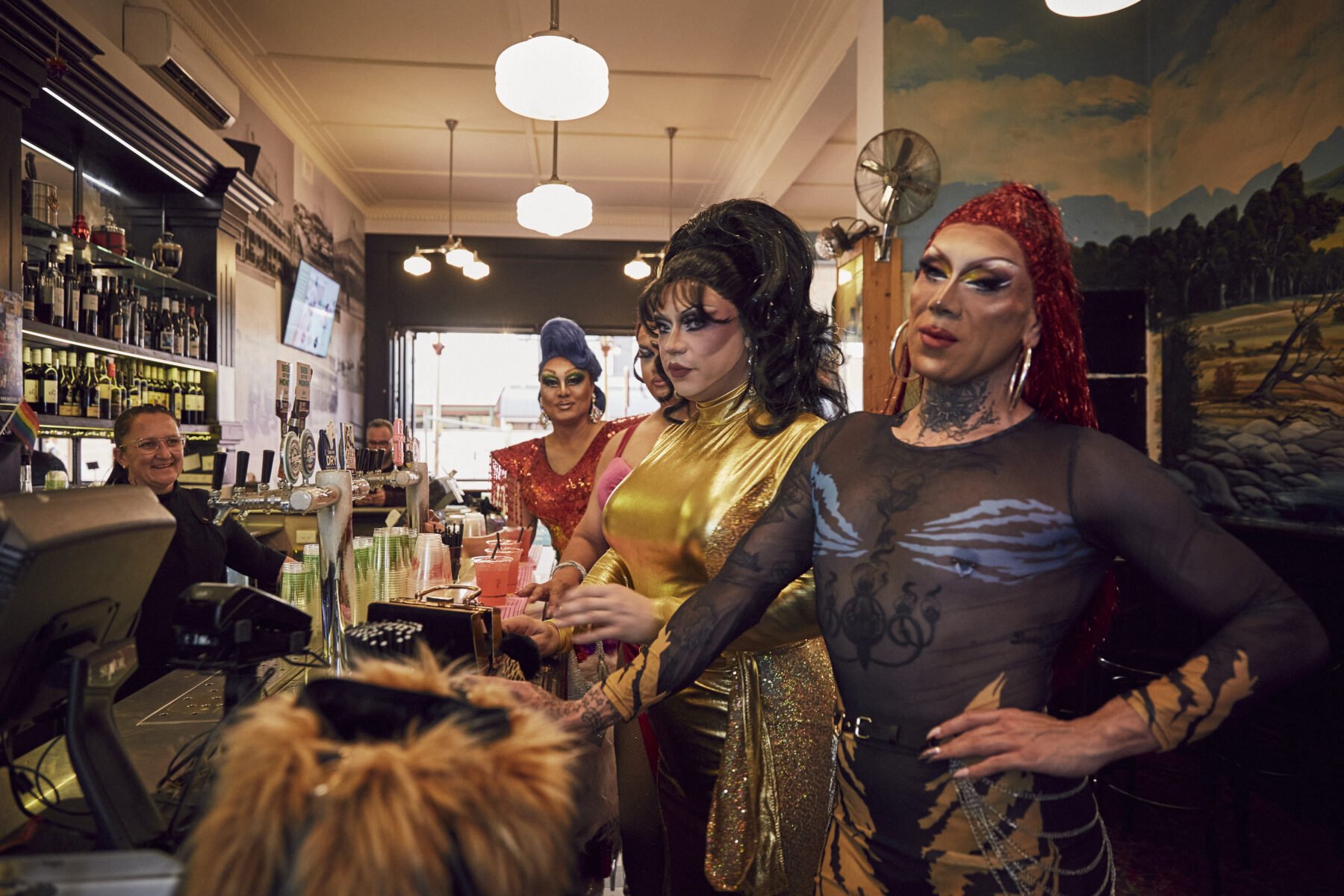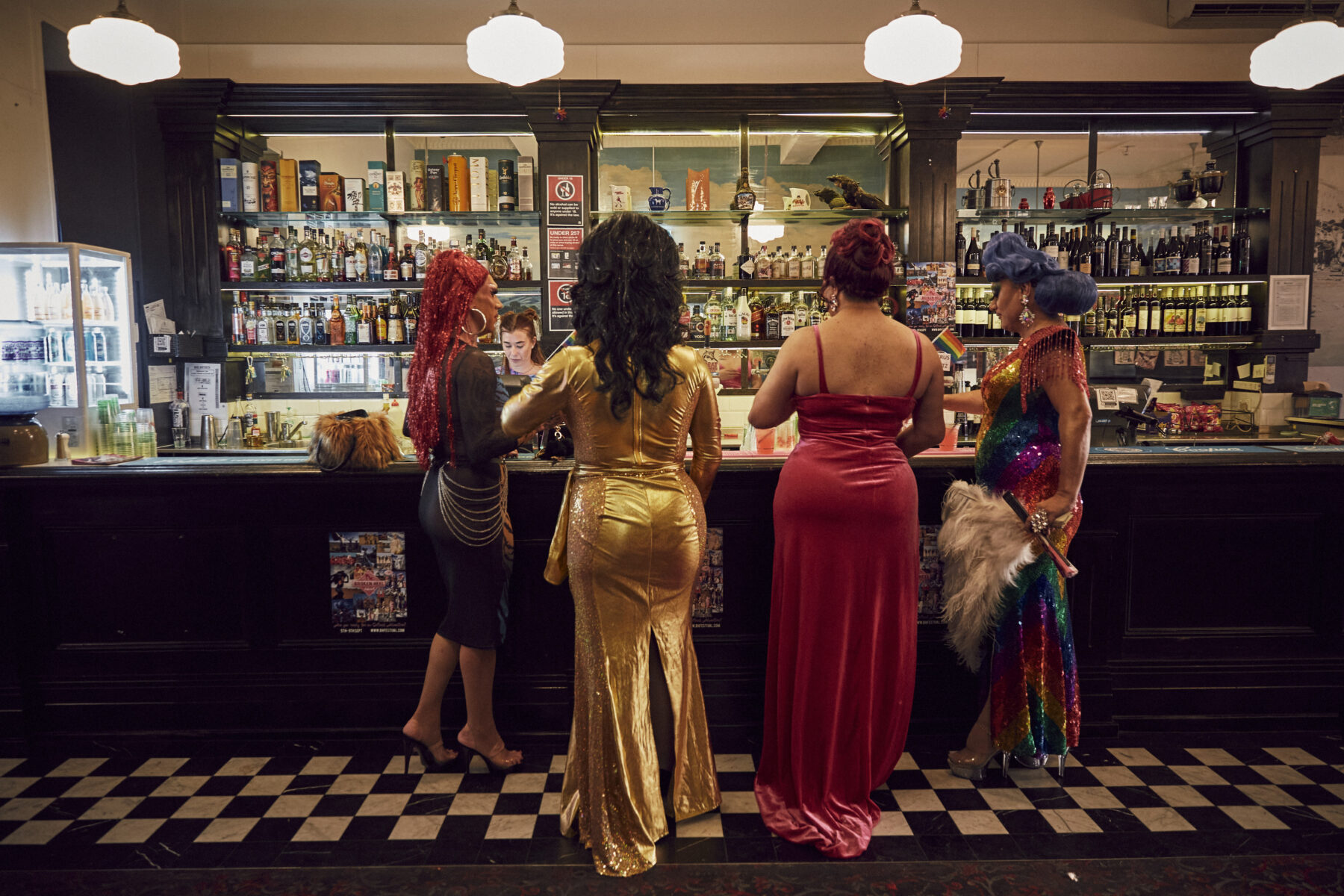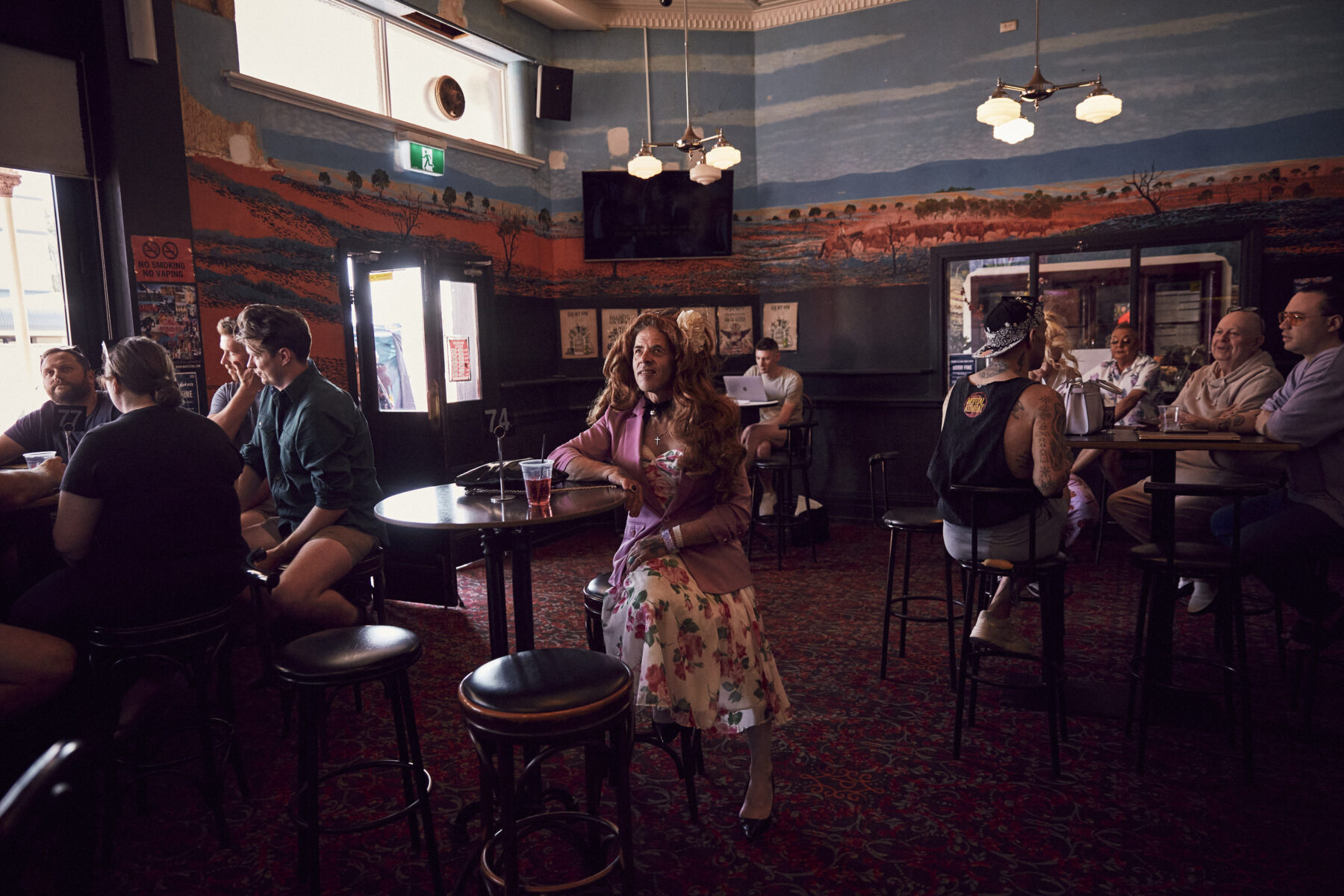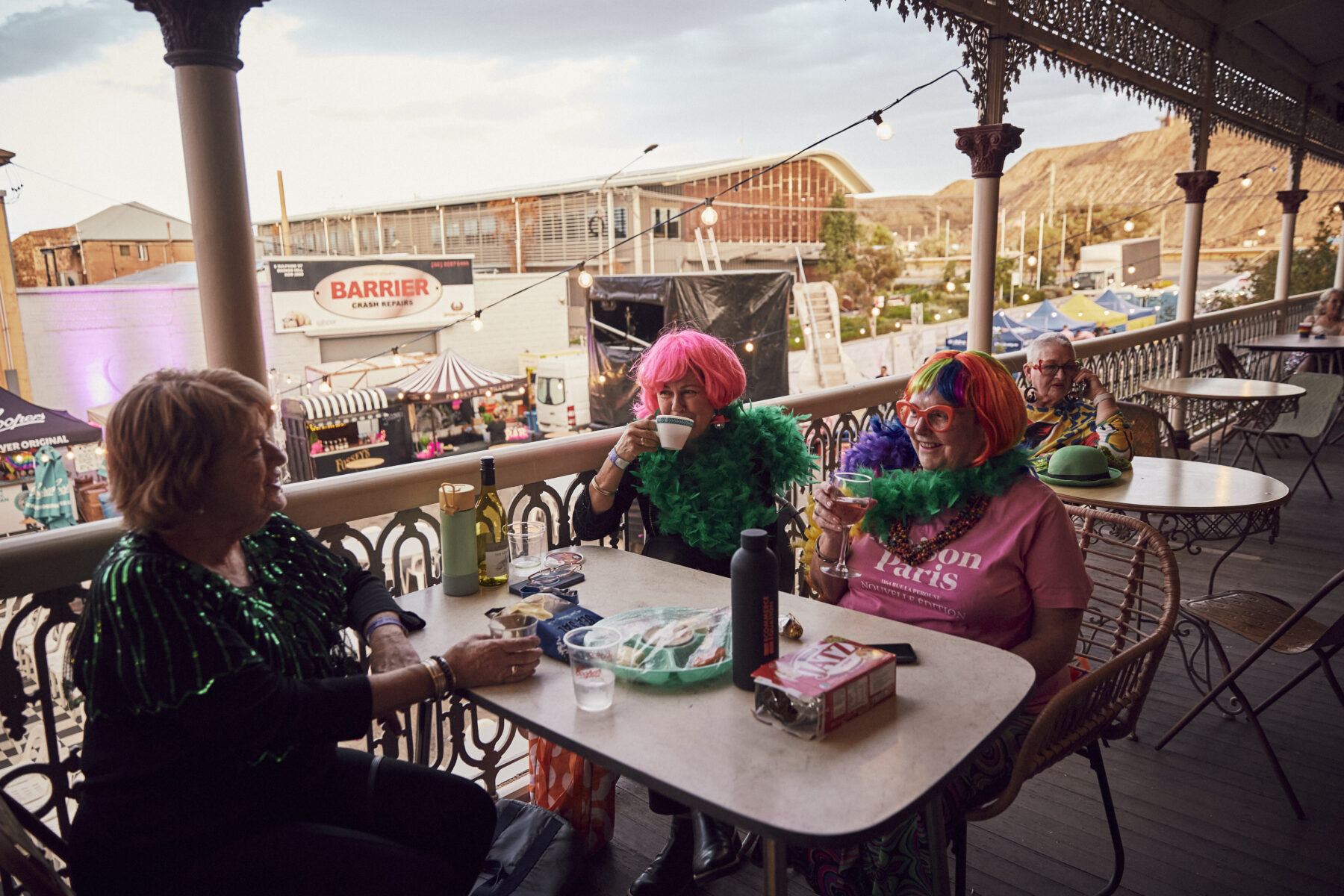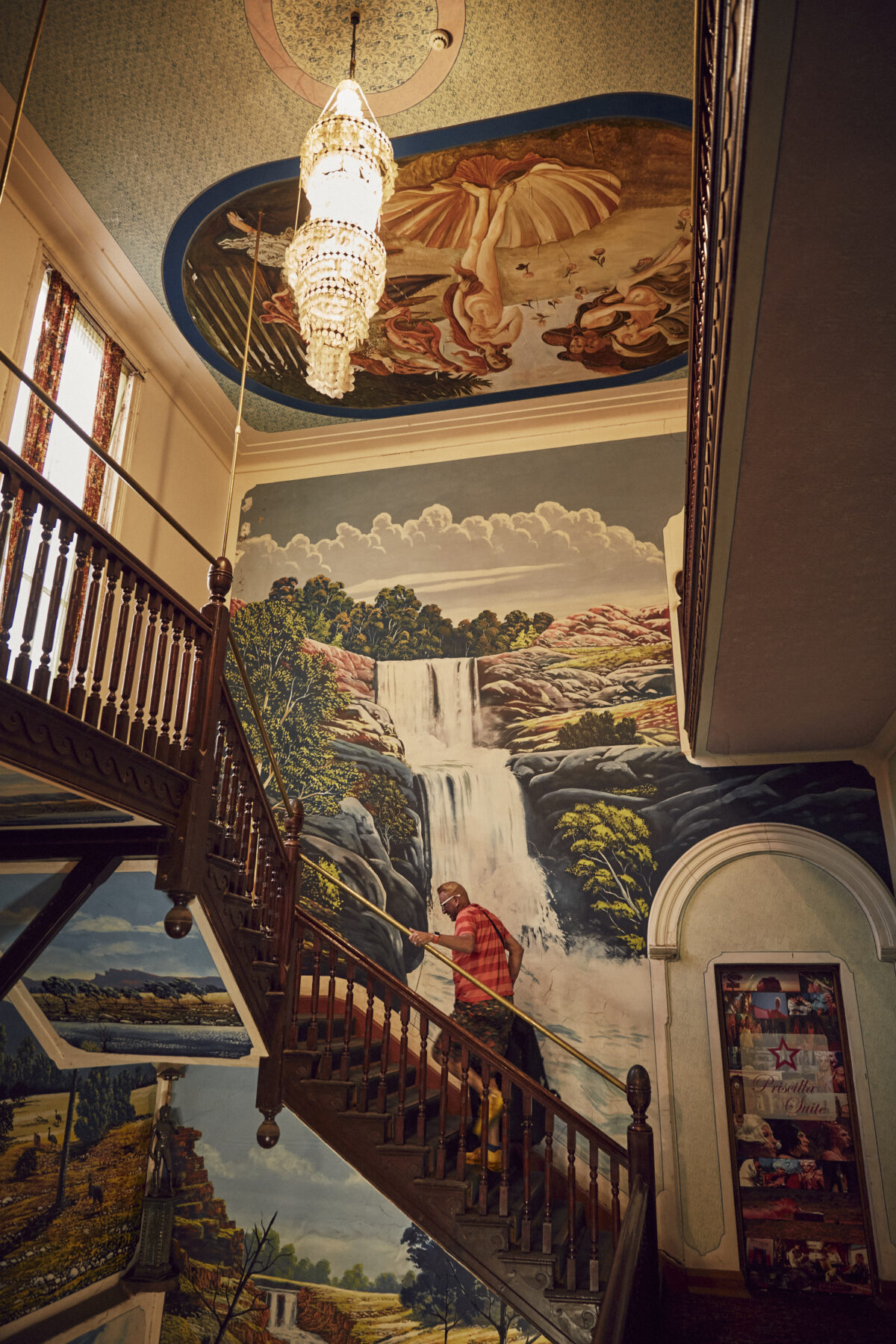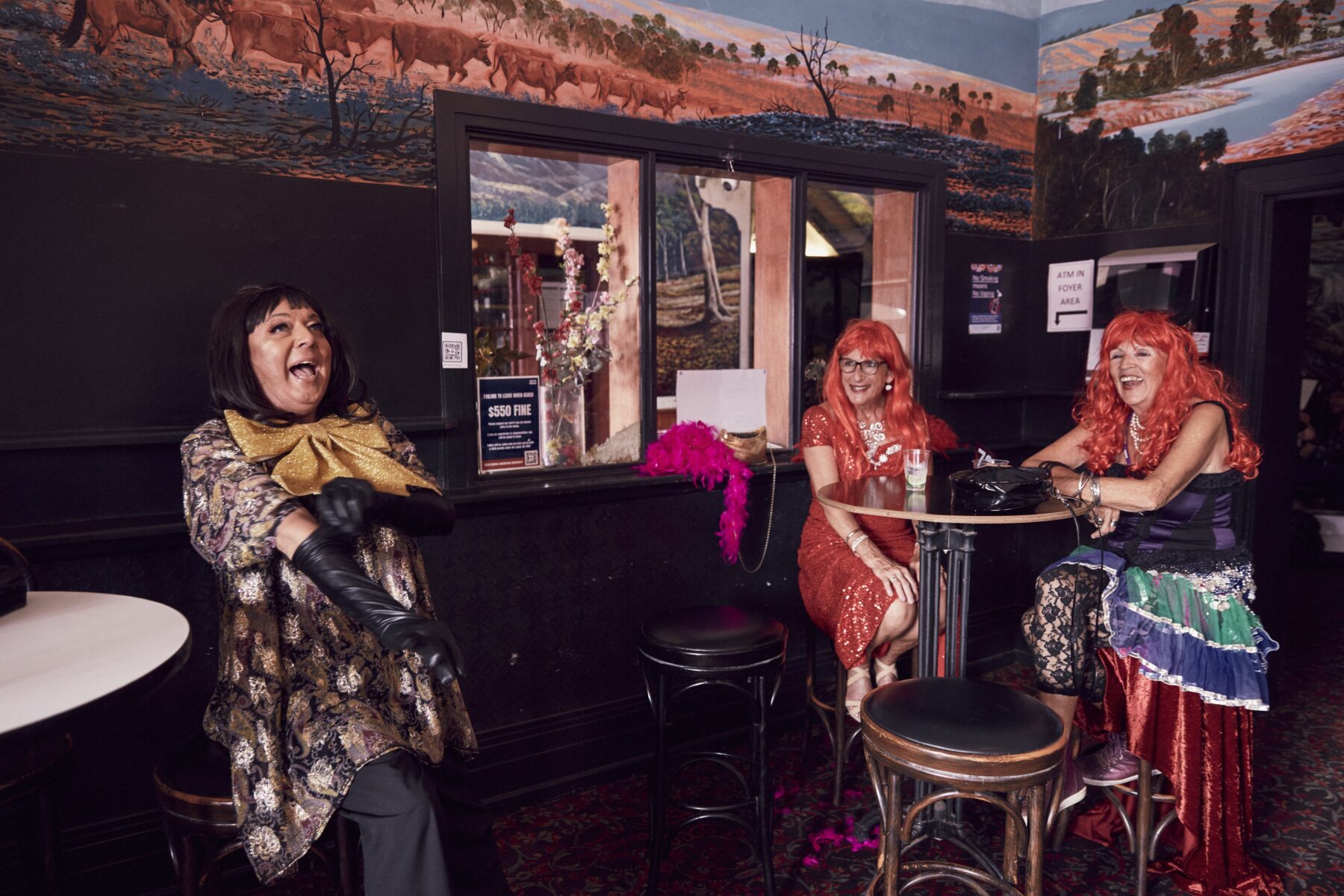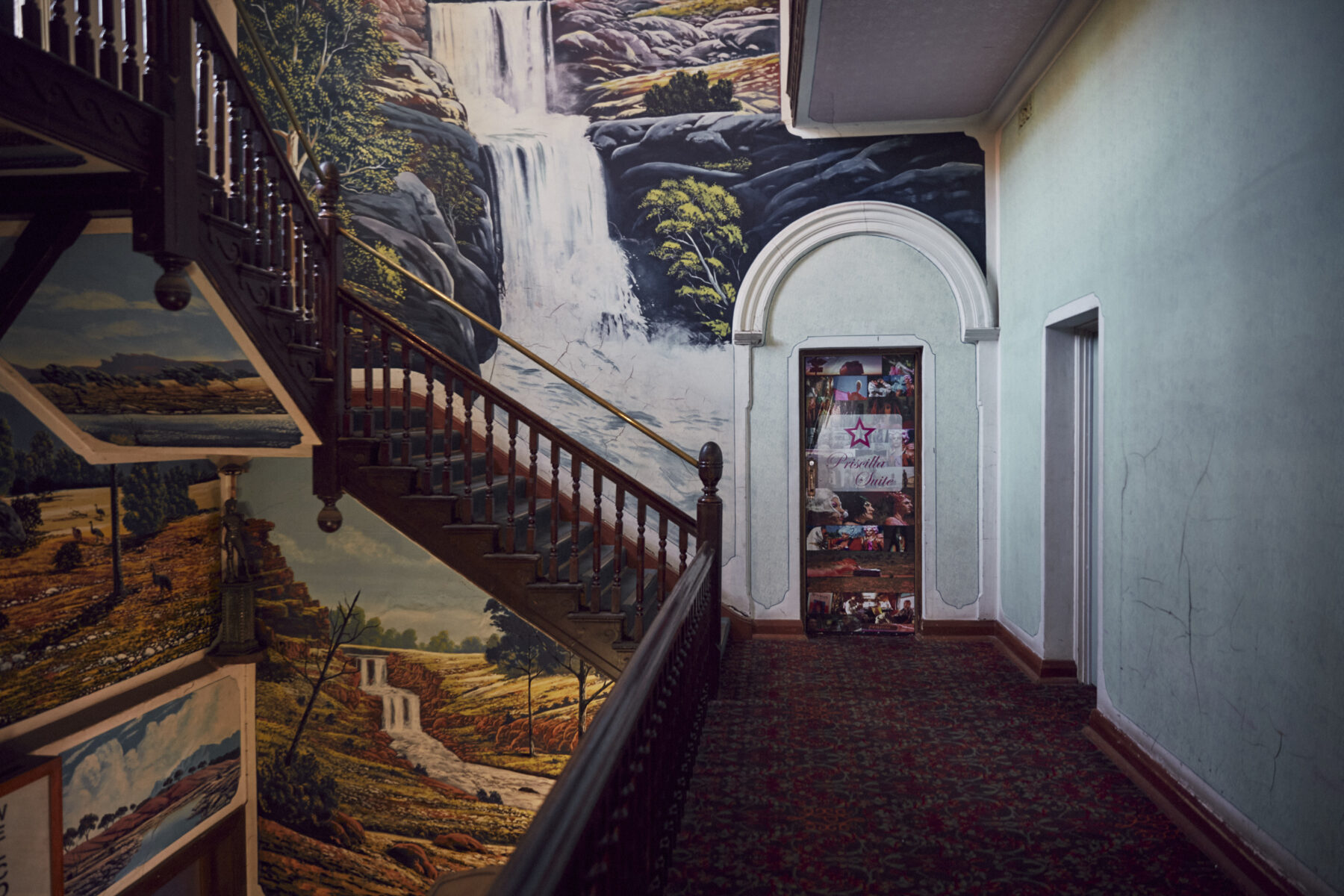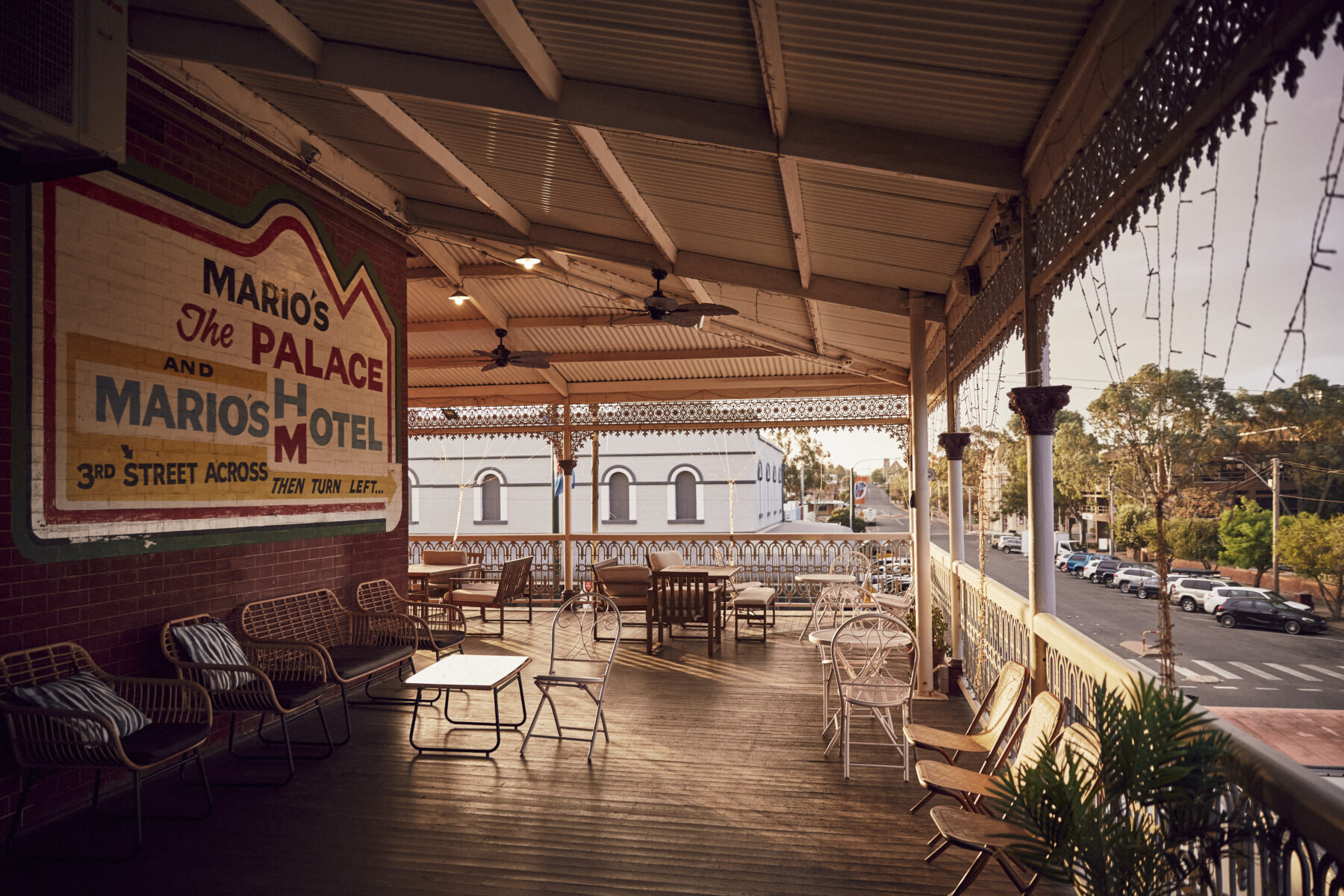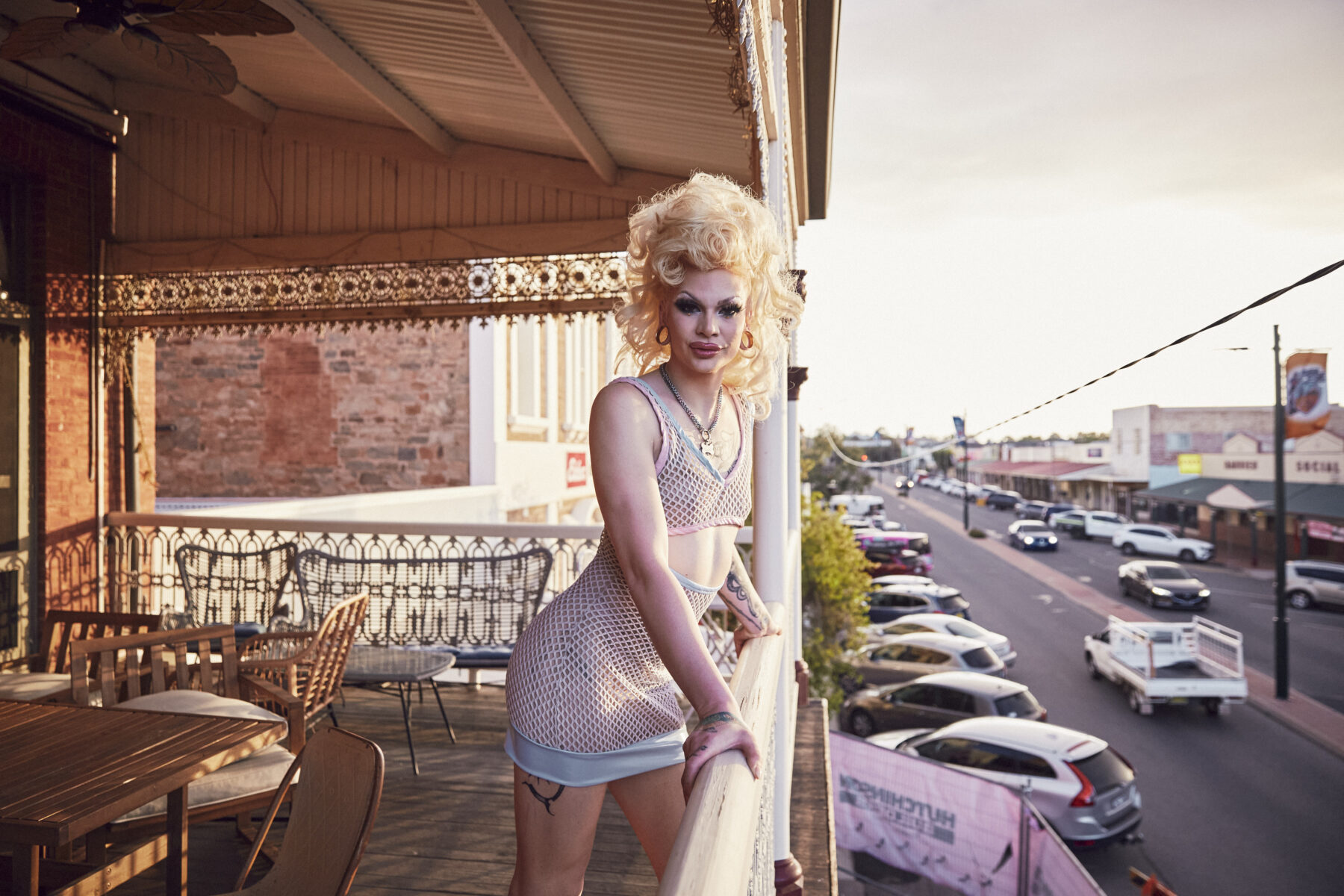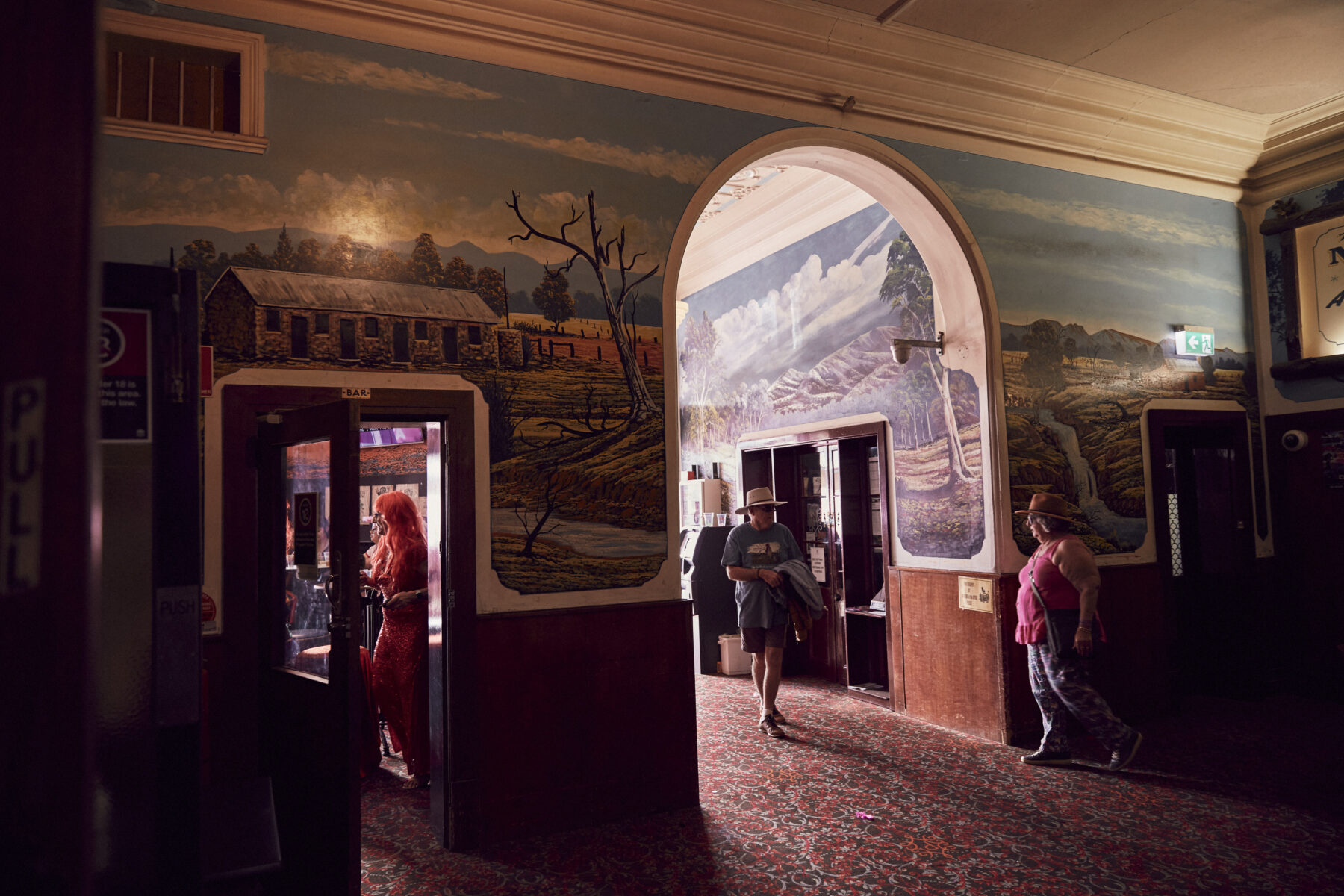By the winter of 1950, Justice Forrest had reached the end of his tether with William Stanley Boothby, a 35-year-old electrician who couldn’t seem to stop dressing as a woman. Facing Broken Hill court for the third time in 12 months, Boothby was at a loss to explain why he liked to wander the deserted streets of the New South Wales outback mining town in the dead of night, wearing slips and stockings, high-heeled shoes, lashes and lipstick. Justice Forrest fined the man £5, told him his next court appearance would result in a jail sentence, and accepted Boothby’s promise that he’d give the clothing back to his fiancée.
Seventy-four years later, on a fine spring Saturday afternoon in Argent Street, Broken Hill’s main drag, one can feel the ghost of Boothby, unleashed and unashamed. Today is the annual Broken Heel Parade – the climax of the four-day Broken Heel Festival – and the main street is clogged with floats and flat-back trucks bejewelled with men dressed as women, women dressed as men and not a judge’s wig in sight.
But the celebrations are tinged with sadness. Today marks the end of Broken Heel, the outback drag festival that began only nine years ago, having grown to become Broken Hill’s second-largest annual event (after St Pat’s Race Day) and runner-up (after the Sydney Gay and Lesbian Mardi Gras) for the crown as the premier queer festival in Australia. The reasons for Broken Heel biting the dust are tediously technical: organiser exhaustion, tough economic times and renovations that need to be carried out on the Palace Hotel, the old country pub that hosts the event.
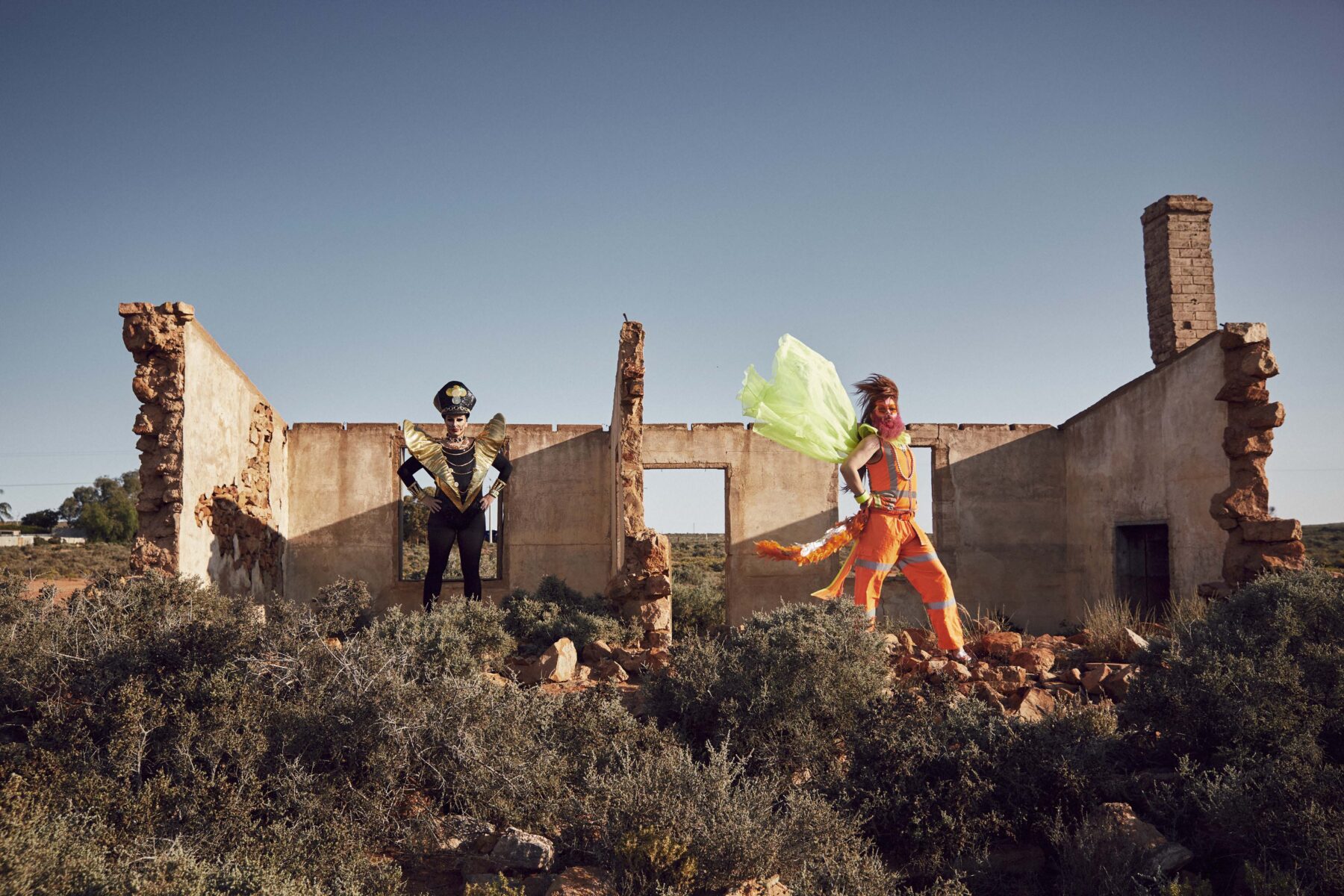
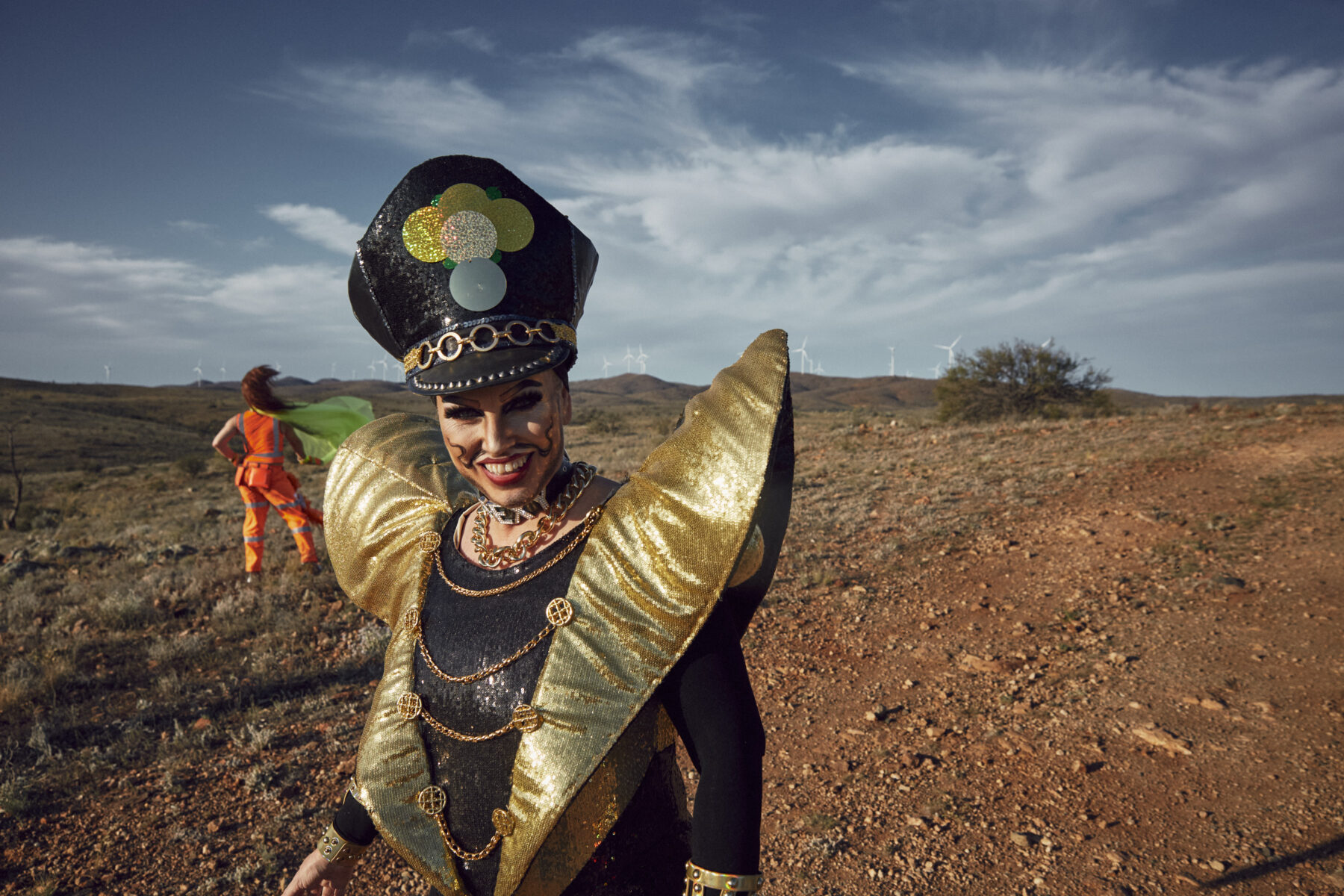
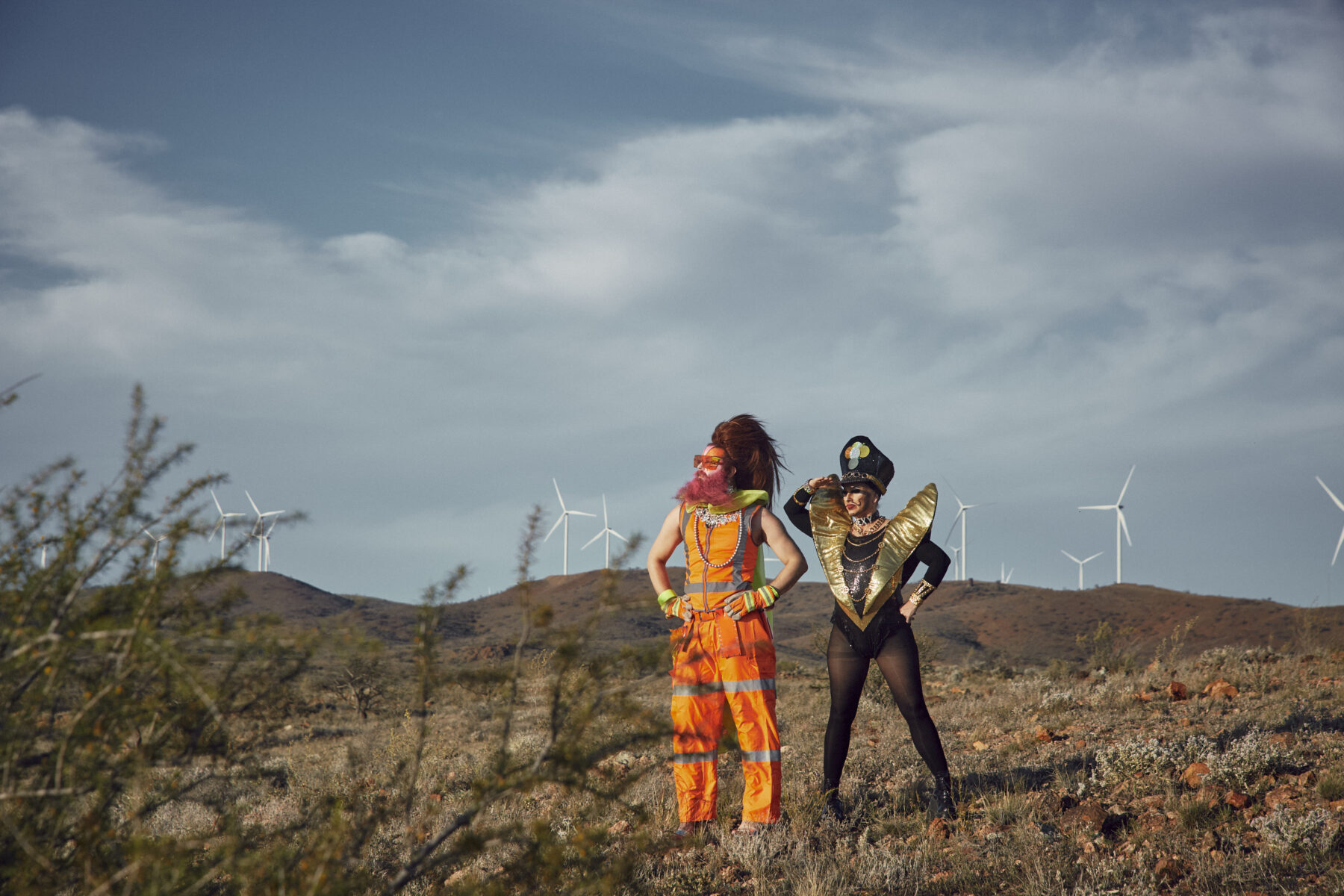
A town booms
Broken Hill was born of an impersonator – not a female impersonator, as such, but an imposter nonetheless. His name was Hieronymus (Jerome) Salvator Lopez von Pereira, a soldier in the Royal Saxon Army during the Franco-Prussian War, who deserted during the siege of Paris in December 1870 after his best friend was killed in combat. Squirrelling onto a ship in a Dutch port, he disembarked at Melbourne in June 1871 and began introducing himself as Charles Rasp, the name that belonged to his dear, dead friend.
Lying low, Rasp made his way to the butt-end of the world, a desolate outback station called Mt Gipps in NSW’s arid far west. It was while working as a boundary rider, checking perimeter fencing on the vast property, that Rasp discovered the “broken hill”, a rocky outcrop glittering with mineral gems that seemed to hold the promise of riches underground. The rest is history. In 1885 Rasp and six friends established the Broken Hill Proprietary (BHP), which became one of the world’s leading suppliers of silver, lead and zinc. For the next 70 years, more than half of Australia’s export wealth came from this hole in the ground in the middle of nowhere.
Performers entertain aboard floats as spectators line Argent Street, in the centre of Broken Hill, for Broken Heel Parade.
Broken Hill boomed. Men flocked from around the world to slave in the underground gulag, and by 1905 the small mining town’s population had ballooned to 30,000. But there was a problem: women … or rather, a shortage of them. Few dared surrender their lives to the harsh outback conditions, and many who did took the quickest way out: Elizabeth Stirrat cut her own throat in December of 1892, evidently fearing her husband would involve himself in a strike; that same month, Martha Jane Neil, wife of a miner, took strychnine rather than live another day; Frank Vawser, a miner, awoke one morning in July of 1899 to find his wife and baby floating in an underground water tank (25-year-old Mary Jane, despairing of life in the outback, having thrown herself and her baby to oblivion); and, in September 1903, the body of 65-year-old widow Pauline Mueller was found in her run-down hut on Patton Street, the woman having launched herself headlong to the dirt floor with a butcher’s cleaver grooved into position on the top of her skull.
Why women, many of them immigrants, might have sought such a desperate escape from Broken Hill is no mystery. Bianca Miani, a Broken Hill local with Italian heritage, recalls the hardship endured by her ancestor. “My grandmother came out here on a boat from Italy in the 1920s,” she says, “for an arranged marriage to a miner she’d never met. It was all organised by her father, who was friendly with some miners who’d left Italy and had come to Broken Hill, so he sent his daughter to marry. She hated it. She had her first baby here, in a corrugated iron house with a dirt floor. She told me she learned to love Broken Hill in the same way she learned to love her husband; lots of time.”
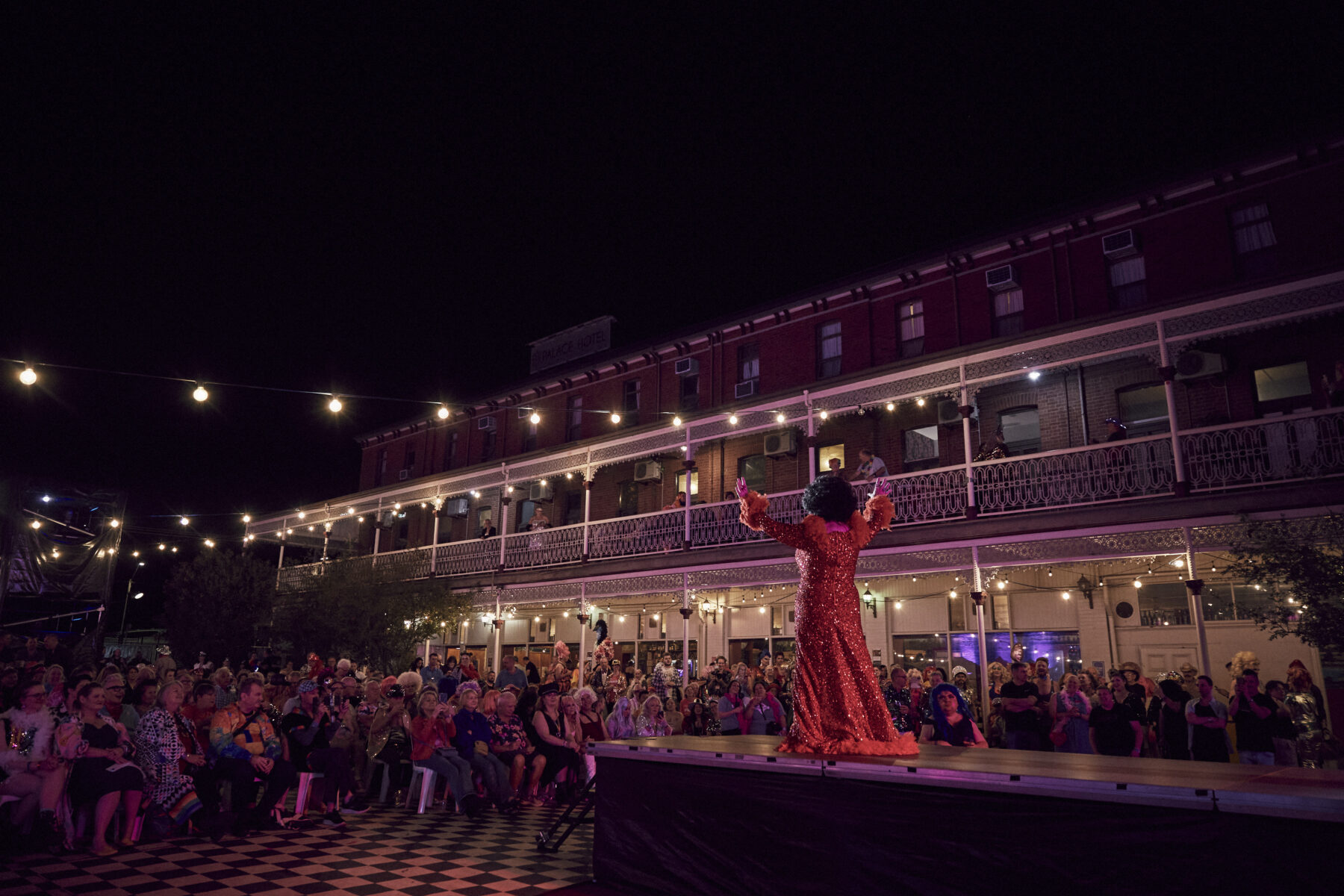
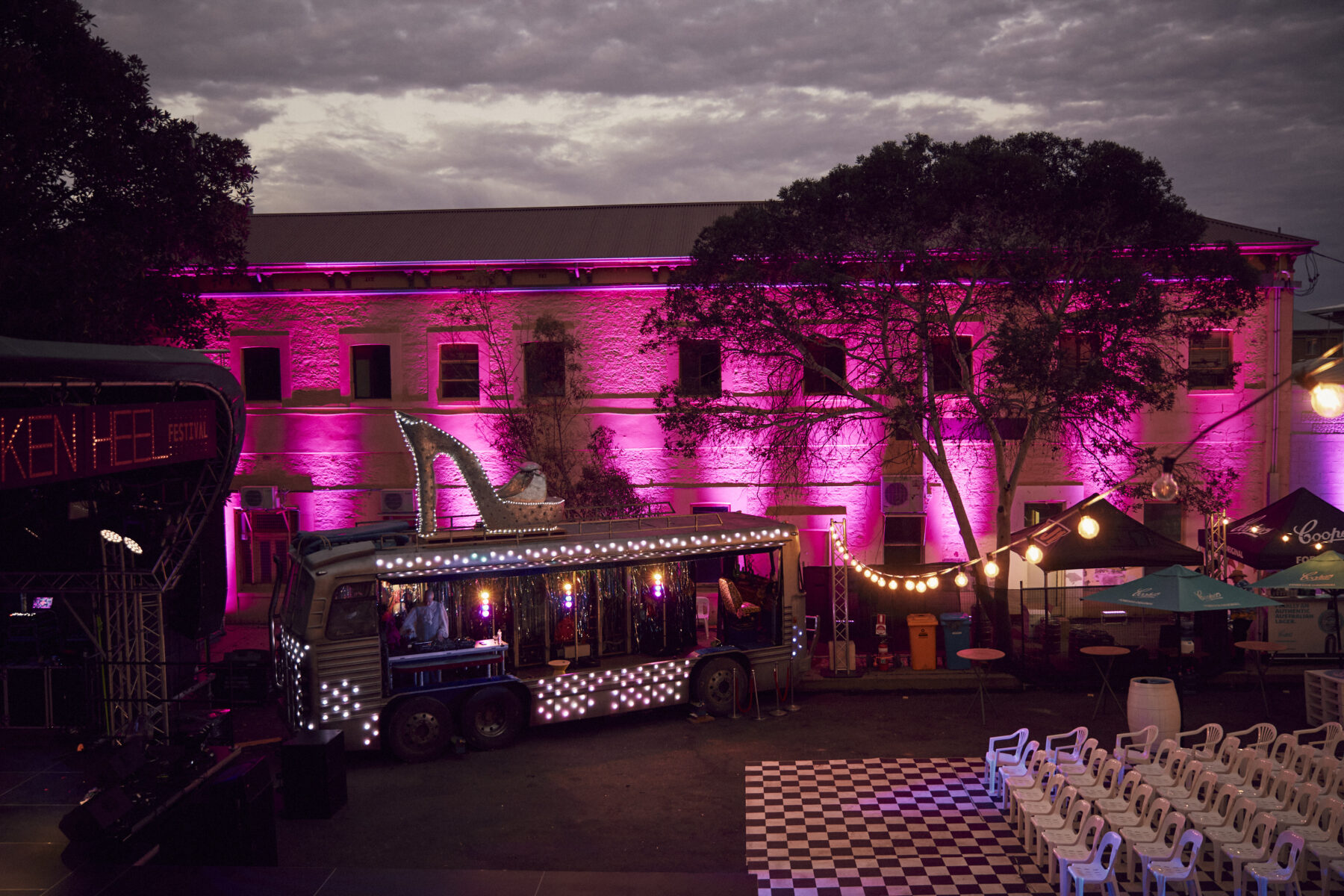
By 1971, the year Canadian filmmaker Ted Kotcheff made the psychological horror film Wake in Fright, the situation had hardly improved, as Kotcheff learned when he took the editor of the local paper out to dinner to find out about the town in which he was to shoot. Kotcheff recalls: “He was the one that told me; ‘Ted, you do know that in this town the men outnumber the women three to one? Think about it, my friend.’ I said, ‘Three to one? Where are the brothels?’ He said, ‘There are no brothels.’ I said, ‘Well, is there a lot of homosexuality?’ He said, ‘In Australia? Are you kidding me? Absolutely not.’ I said, ‘What do they do for human contact?’ and he said, ‘They fight.’ “And, of course, I put a scene like that in the film, after the kangaroo hunt, when the three men are rolling around on the ground, the doctor and the two others. They’re all wrapped around each other. Although they’re fighting, they’re also embracing simultaneously.”
Homoerotic undertones notwithstanding, Wake in Fright introduced Broken Hill and all its masculine ugliness to the world. But it was 23 years later, with The Adventures of Priscilla, Queen of the Desert (1994), that director Stephan Elliott launched Broken Hill on a new trajectory. Though the film depicted three road-tripping drag queens getting a frosty reception in Broken Hill, something about the dichotomy stuck in the psyche of the town. An underground movement took root, which seemed to be waiting for drag queens to return.
Festivities begin on board the ‘Silver City Stiletto’ train – a special train carriage funded by NSW Tourism providing transport for revellers, travelling from Central Station to Broken Hill Station.
The festival’s birth
Broken Hill local Pamela Wright recalls: “It was in the 90s that I became aware of this thing called ‘Go Camp’. It was a loose collection of gay guys and cross-dressers who met regularly, all very hush-hush. And at the centre of that group was Andrew Bevarne.”
A former dancer at The Australian Ballet School, Andrew was a drag pioneer in Broken Hill, his conventional good looks and outrageous courage (he was often spotted shamelessly mincing down Argent Street in cut-off denim shorts) almost single-handedly kicking open the door for Broken Hill’s queer community. Andrew’s untimely death in 2017 meant he only got to witness the birth of Broken Heel, but Esther La Rovere, owner of the Palace Hotel and organiser of Broken Heel Festival, credits Andrew with getting the ball rolling.
“Andrew was a dancer and performer and had done drag in Sydney,” Esther says, “and his sister, Julia, was involved with Les Girls, the famous Kings Cross drag show niteclub. So, he was probably the first to do shows here at the Palace, often sort of themed on the movie Priscilla. “Initially, we were just meeting passengers on the Indian Pacific when it stopped in Broken Hill at 6am. But all the while my sister Selina and I were talking about the idea of a larger festival.”
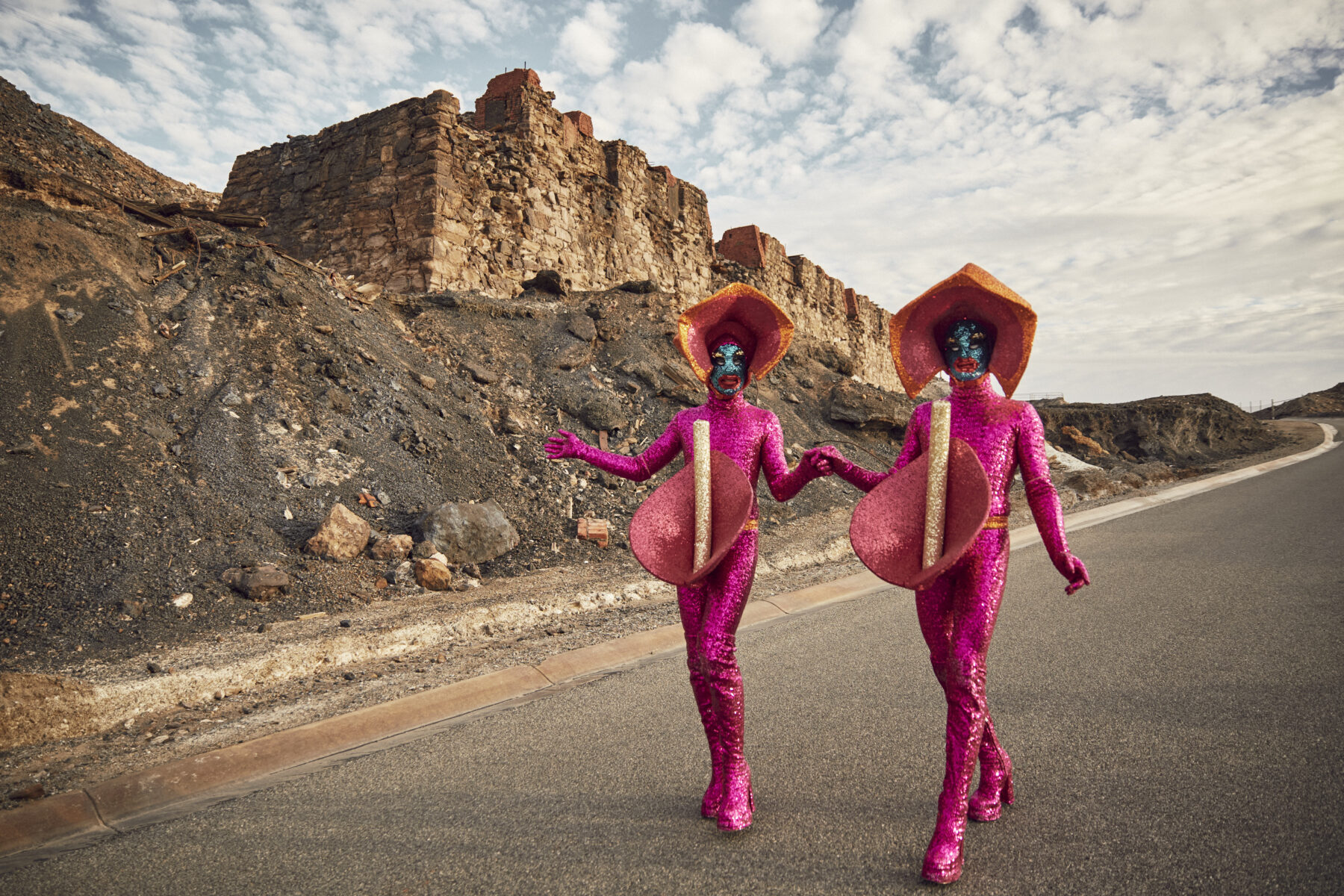

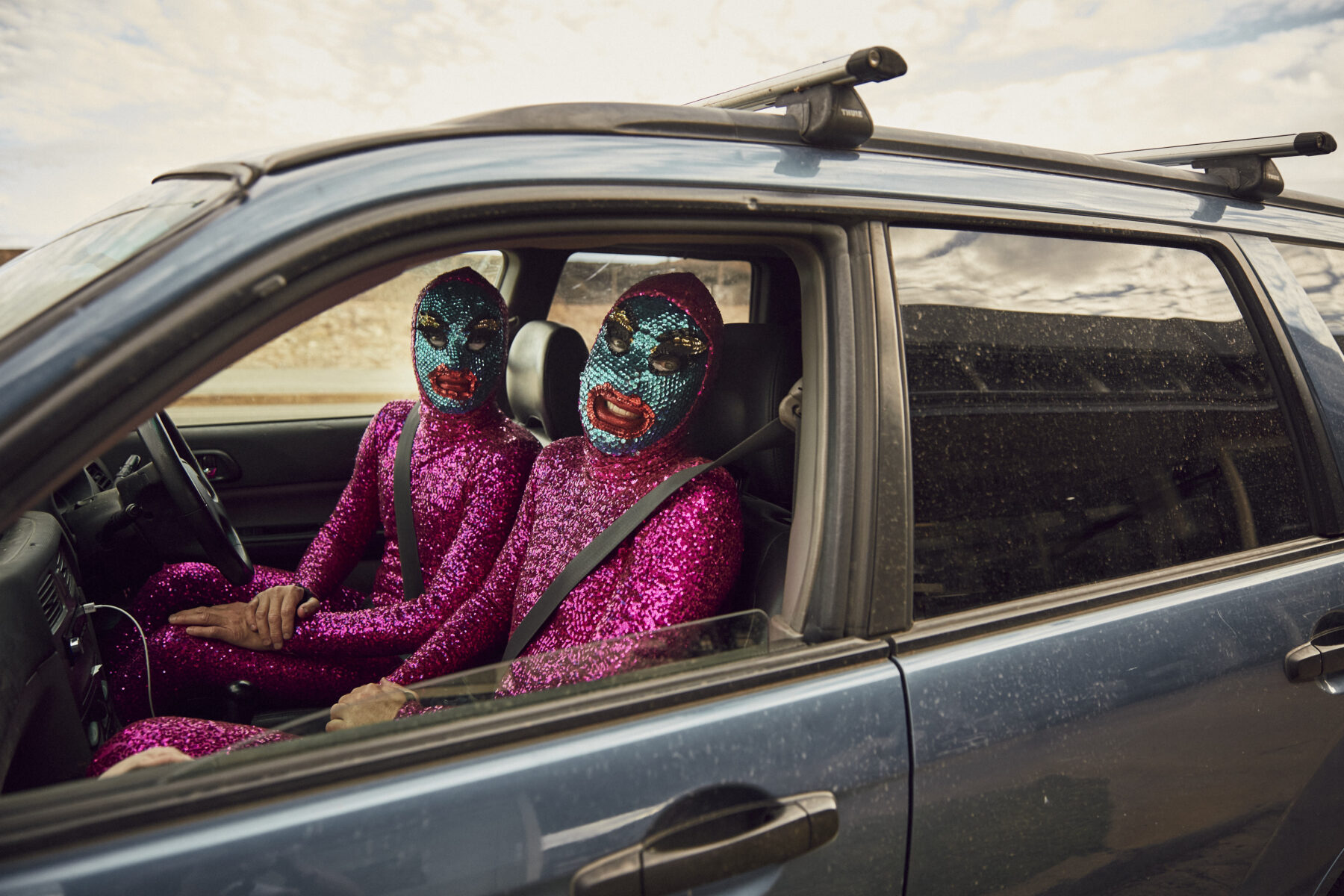
For Esther, who’d cut her teeth on the UK festival circuit early this century working behind the scenes at huge events such as Glastonbury and Reading, a local Priscilla-themed festival seemed tantalising and do-able. But it was in 2013, when Stephan Elliott donated the bus and giant stiletto staircase from the Priscilla stage show to the Palace Hotel, that work on Broken Heel began in earnest.
The first event came to fruition in 2015, but not without local resistance. “The council was initially really into it because they could see the value for Broken Hill,” Esther says. “But the police were a problem. Unfortunately, I was dealing with one person, and he was a difficult man. Those early meetings … I remember him telling me that I shouldn’t go signing any cheques until he’d signed off on this. I thought, ‘What could possibly be the problem?’ And he was like, ‘What are you going to do to control all those sorts of people … they’re all drug takers!’ But he’s retired now. And the turnaround since then, towards how it should be, is extraordinary.” (Police were smiling and grooving with the rest of the crowd at this year’s event.)
The old outback mining town’s architecture and streetscapes.
That inaugural Broken Heel, on the 21st anniversary of the release of The Adventures of Priscilla, Queen of the Desert, was an eye-opener not just for Broken Hill, but for the organisers. “The first event had just 600 people,” Esther says, “and we were pretty happy with that. About 80 per cent of them were from out of town. One woman came all the way from New York, which really blew our minds, and made us realise that people would be willing to travel for this, that a seed had been planted and people were going to make it happen.”
The festival continued to grow. In the following years, some 2000 people travelled to the event annually. The parade featured hundreds of performers trucking down the main street for the amusement of up to 6000 locals – families and old-timers craning their necks to take a peek at “those sorts of people”.
“For the first five years, around 65 per cent of our audience was females over 55 years old,” Esther says. “It’s gone on to become a unique demographic, from 18-year-olds to people in their 80s, and probably still predominantly female, but a very diverse crowd, which is quite exceptional for a festival of any sort.”
At long last, Broken Hill’s lack of women – or, at least, people who look like women – appears to have been addressed.
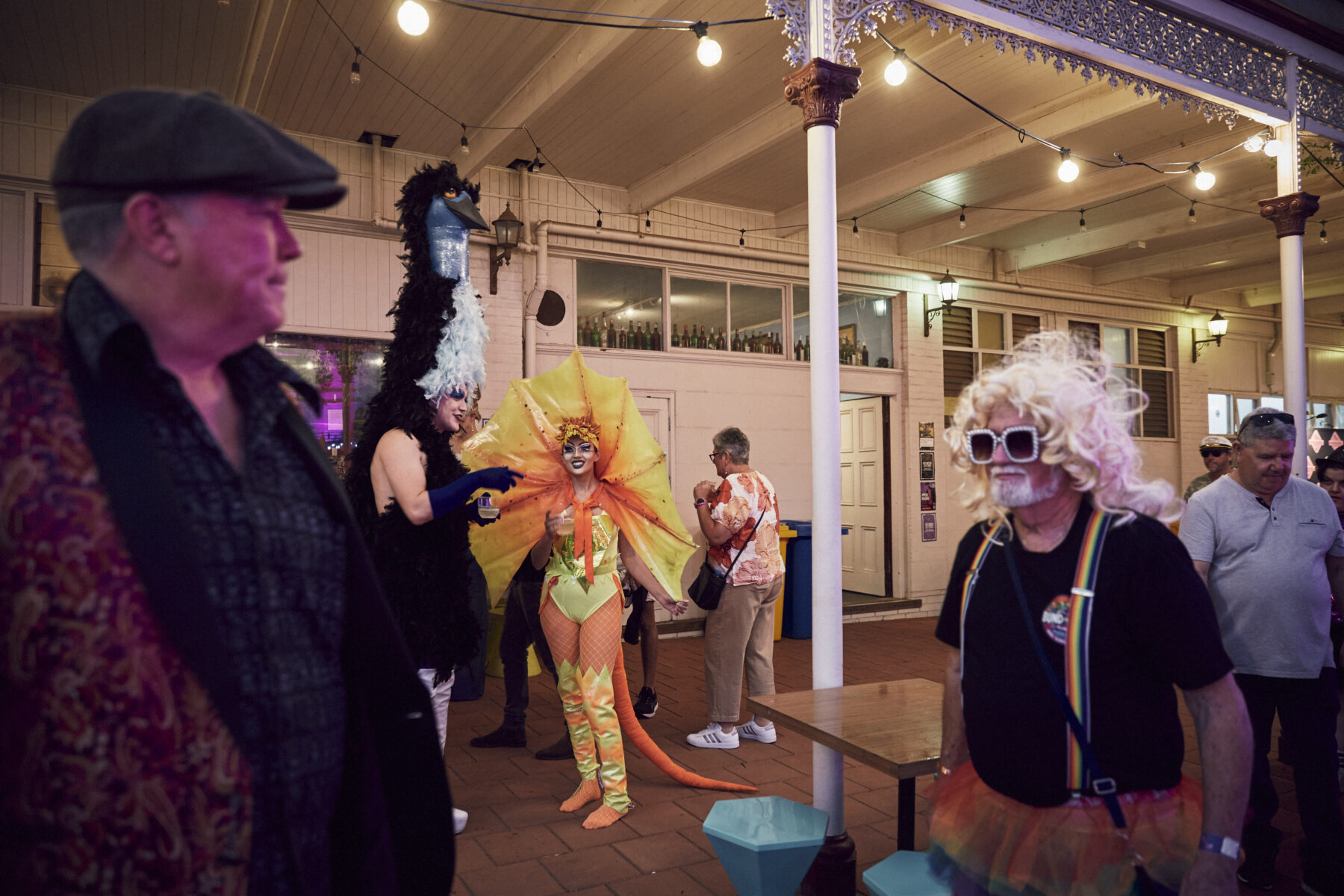
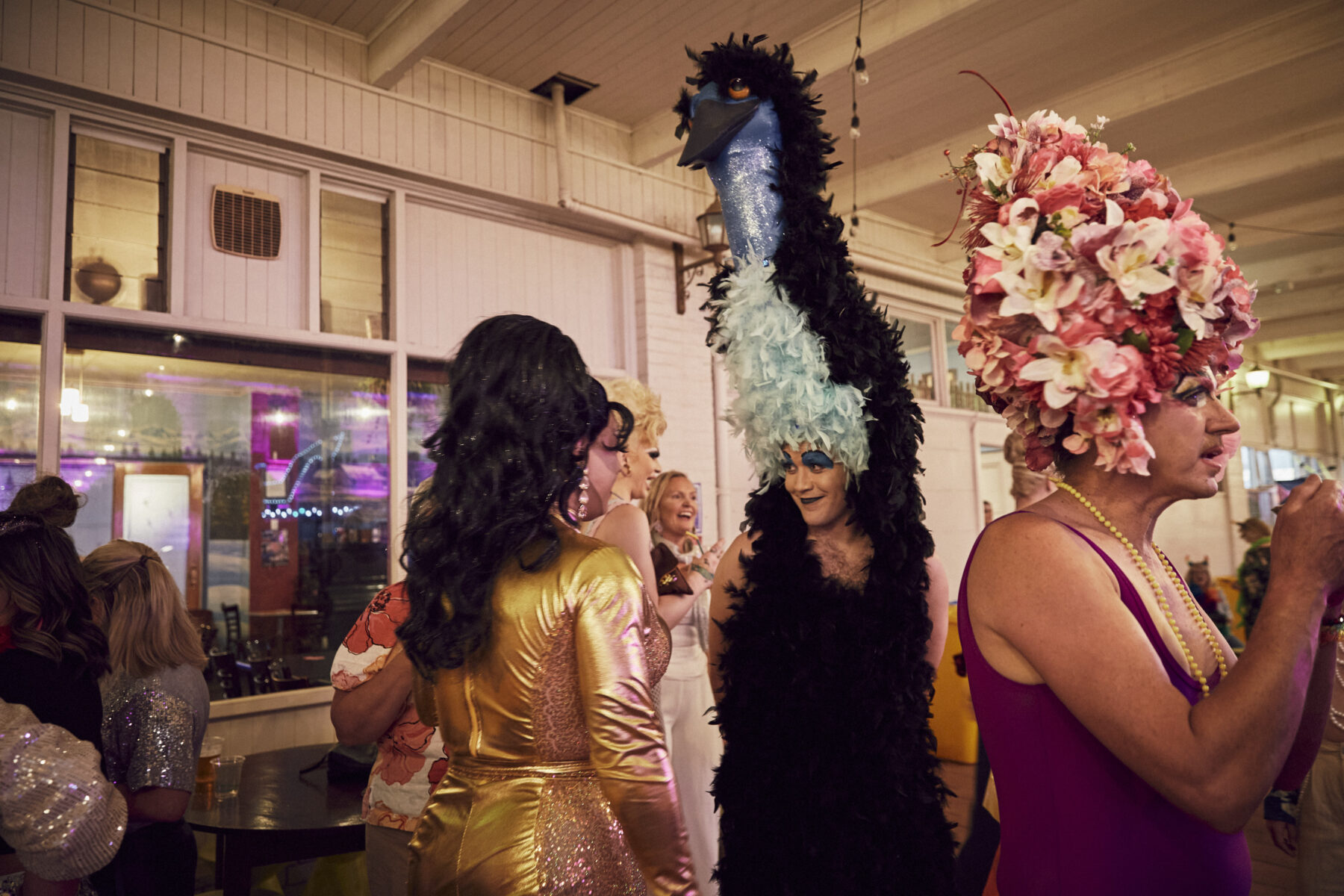
HQ at The Palace Hotel
One has to view the Palace Hotel up close to get a sense of its bizarre grandeur. Opened in 1889 by the Temperance Movement as the Broken Hill Coffee Palace, its monolithic proportions were meant to dwarf the pub-goers of Broken Hill into teetotalling submission. The dry idea didn’t catch on and, within three years, the Palace threw open its doors to drinkers, who have made the old pub the jewel of their town ever since.
In the 1960s, owner Mario Celotto commissioned murals for the internal walls and ceilings, painted mostly from postcards featuring European vistas, with a dash of Australiana thrown in. Wild horses, cattle and kangaroos gambol by waterfalls unknown to this part of the outback. Italian cypress trees huddle with gums and stringybarks, the odd tasteful nude jostling for space among the taxidermy – eagle, owl, deer and giganteus crab eyeing every movement. Drag queens or not, the Palace Hotel is one of the weirdest places in Australia to have a drink.
Scenes from The Palace Hotel throughout the festival – the iconic and bizarre old country pub that hosts the event.
The Palace serves as a perfectly burlesque HQ for Broken Heel, surrounding streets blocked off for the party and performances – female impersonators miming to cornball big-band oldies, dancers, contortionists, comediennes and operatic vocalists. Something for everyone, though, peculiarly enough, it’s not for everyone.
“I don’t do drag and I’m not a cross-dresser,” says Geoff from Port Stephens, a middle-aged gay man in a wig and frock. “I actually don’t like it. It does nothing for me as far as fetish goes, or anything like that. It’s purely for … the fun of the fair, let’s say.” A former window dresser and display artist with David Jones department store, Geoff was married for 23 years – “blessed”, he says – until admitting the truth he’d always known to his wife at the age of 45. “I hated myself for a long time,” he says. “But I kept it quiet, out of devotion to my wife and kids. You make those sacrifices. In the end, I came clean, ended the marriage, and then had to learn all over again as a brand-new gay man.” For Geoff, Broken Heel presents one of the few yearly opportunities to let his hair down. “My kids know,” he says. “I don’t flaunt it, rub it in their faces. I don’t think they’ve ever seen me dressed up, because that’s not necessary. But they know. They just think it’s a bit of fun, I guess.”
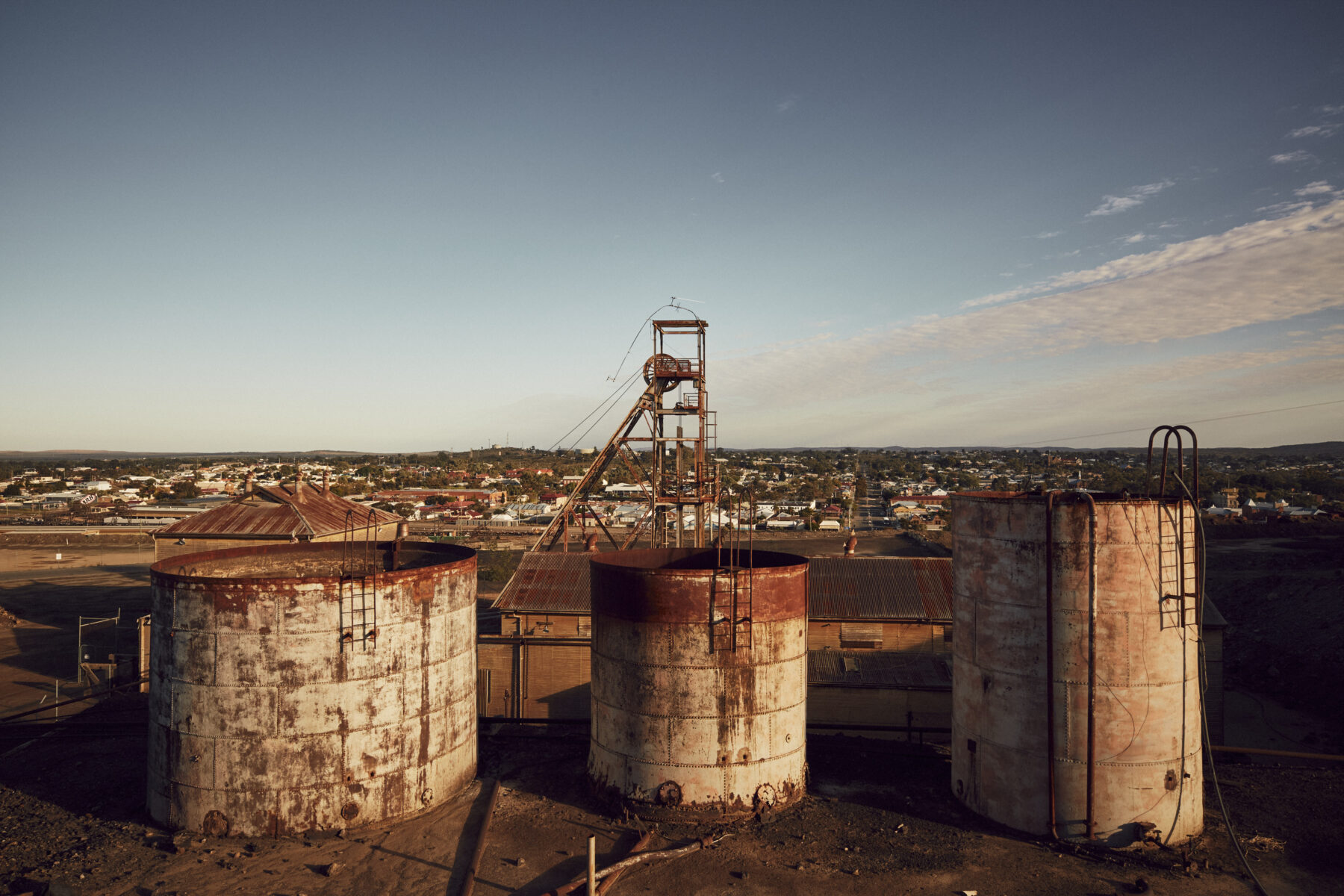

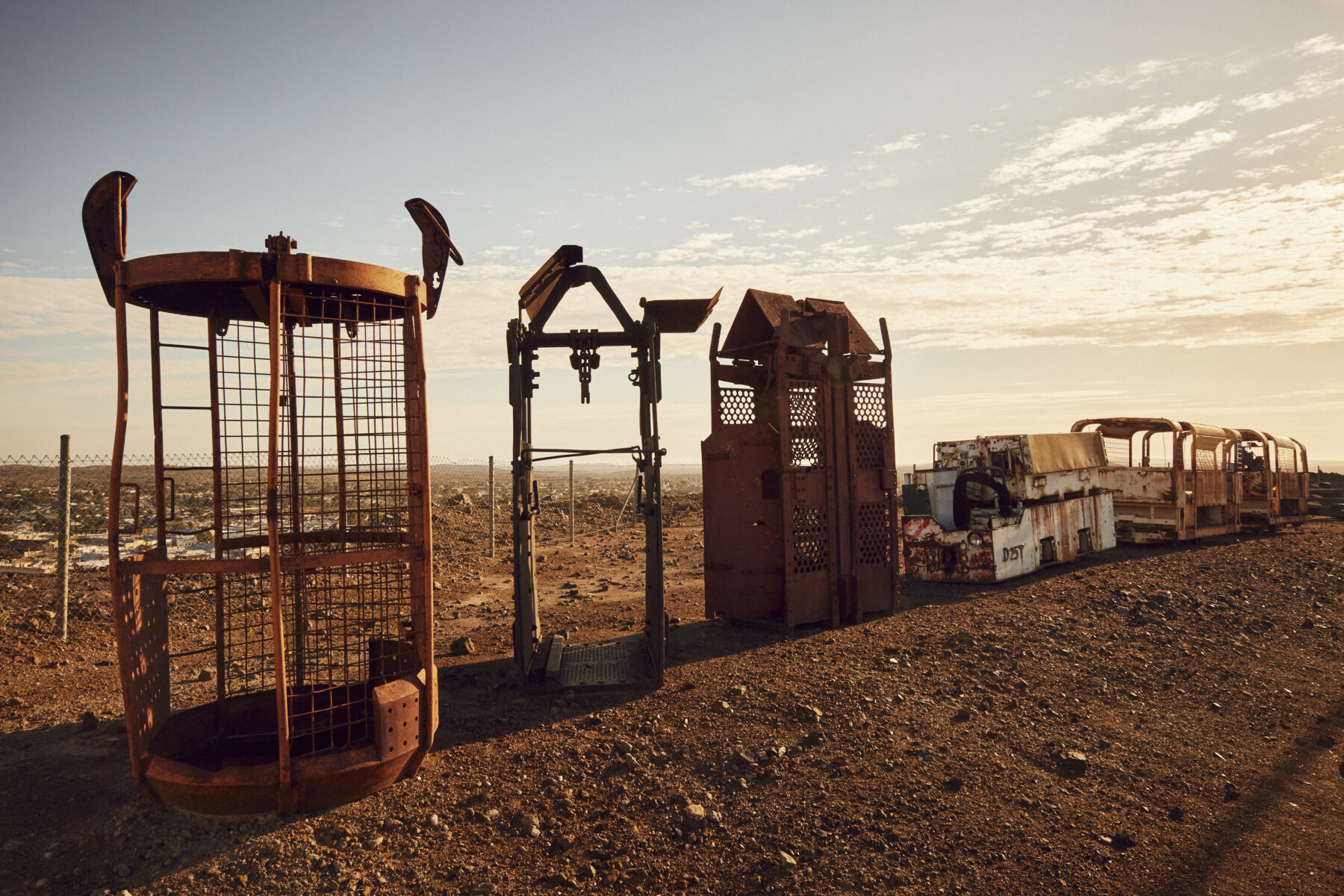
A similar story is told by Richie, aka ‘Gingernutz’, who has travelled from New Zealand for his first Broken Heel. In fact, it’s his very first time in drag. Born in Zimbabwe during the Robert Mugabe era, Richie led a life of oppression and denial, notions that seem to exist in some far galaxy as he rocks Broken Heel in batting lashes and a palette of make-up. “We had a life that broadly followed the style of traditional upbringing of a white African, colonial, conservative, Christian ethic-based family in a country where ‘sodomy’ was a criminal offence and could ultimately be punished by death at the time. You just didn’t even think about it, explore or even bother with anything to do with the topic at all. It just was not advisable or wise to even think about it. So, I didn’t.”
When Richie’s childhood home was taken at gunpoint – part of Robert Mugabe’s Presidential Powers (Temporary Measures) Act that enabled the government to seize white property – the family fled to New Zealand, where Richie continued with what he calls “my white picket fence program … get a job, wife, house and kids and plan nice camping and boating holidays”.
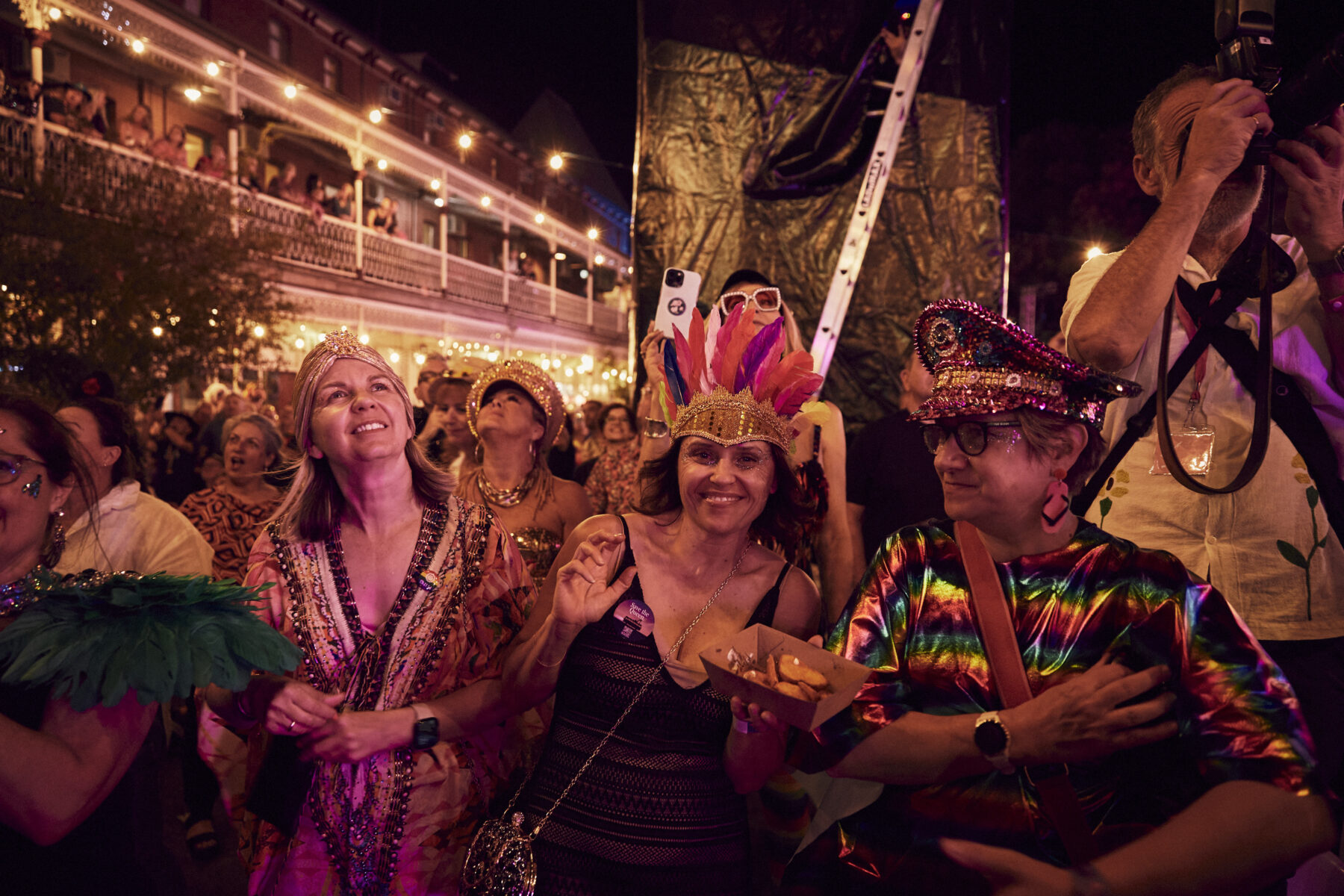
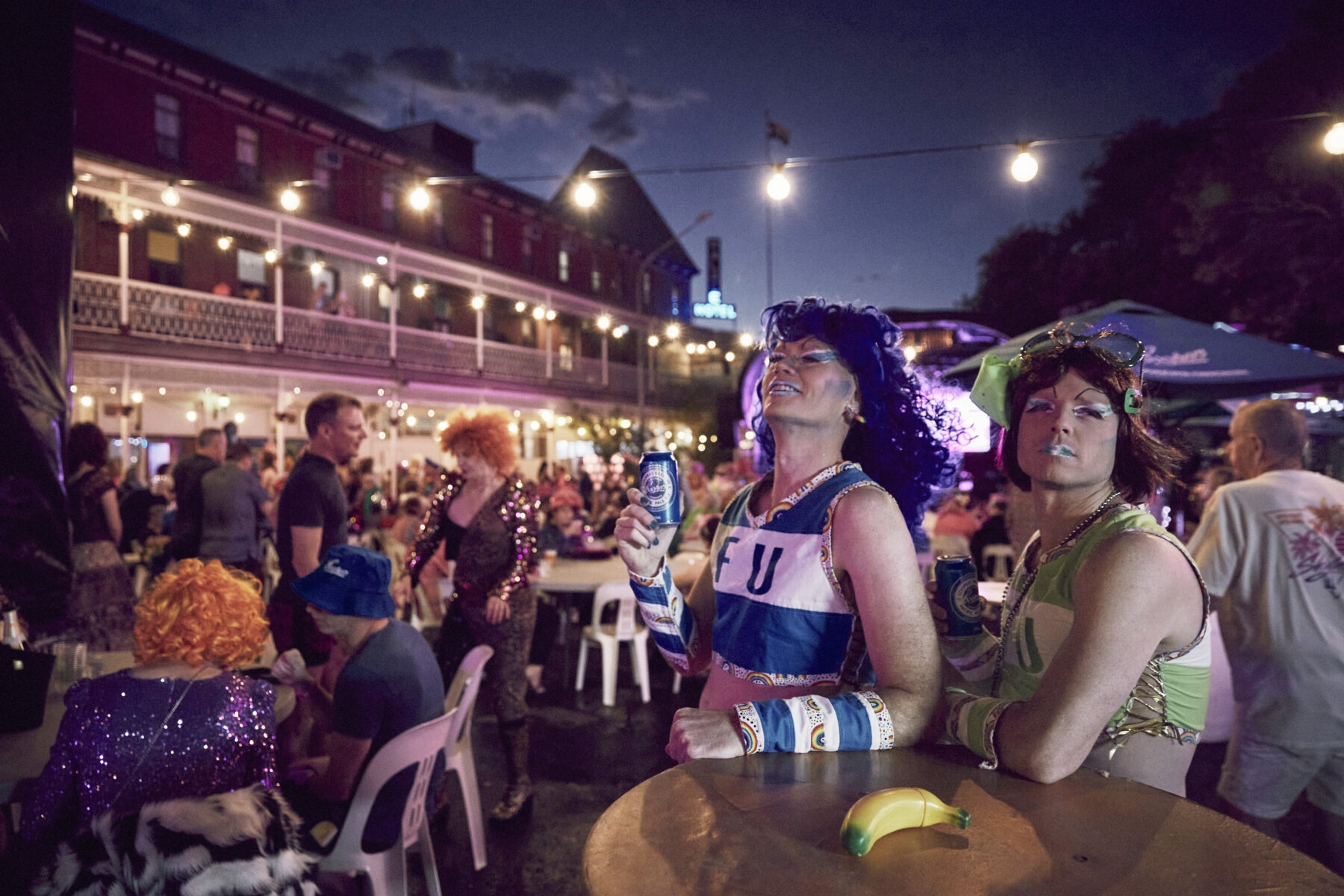
It was just before COVID that things fell apart – or opened up, depending on your point of view. Richie sees it as the latter. “We ended our relationship and I crashed into an emotional vortex,” he says. “Somehow, after the recovery drugs and counselling, I began to open the door to a whole new second life, filled with rainbows and unicorns. My ex-wife knows I’m bi or gay, and that I always liked themed dress-up, but probably not so far as the concept of drag, as I’ve never done dresses or make-up before.
“This is my first time in drag. I’ve been wanting to find a safe way to explore this … to dress up and feel different using clothes, performance and a story. So, this seemed like a great way to do it and to see the great outback of Australia,” Richie says.
The irony of that “safe” place being Broken Hill, a notional republic very similar to the one from which his family escaped all those years ago, is not lost on Richie. “Coming from a mining family in Zimbabwe, BHP was a company I knew of, in name only,” he says. “In a way, I identify with the outback and its economic landscape of mining, slag heaps and general industrial architecture. I am familiar and at home with holes in the ground. “But Broken Heel has been a great experience,” he says, “far away from the city, friends and judgement, to help me explore who I am and what I’m wanting in life. What a privilege to do this now in a time of greater social acceptance!”
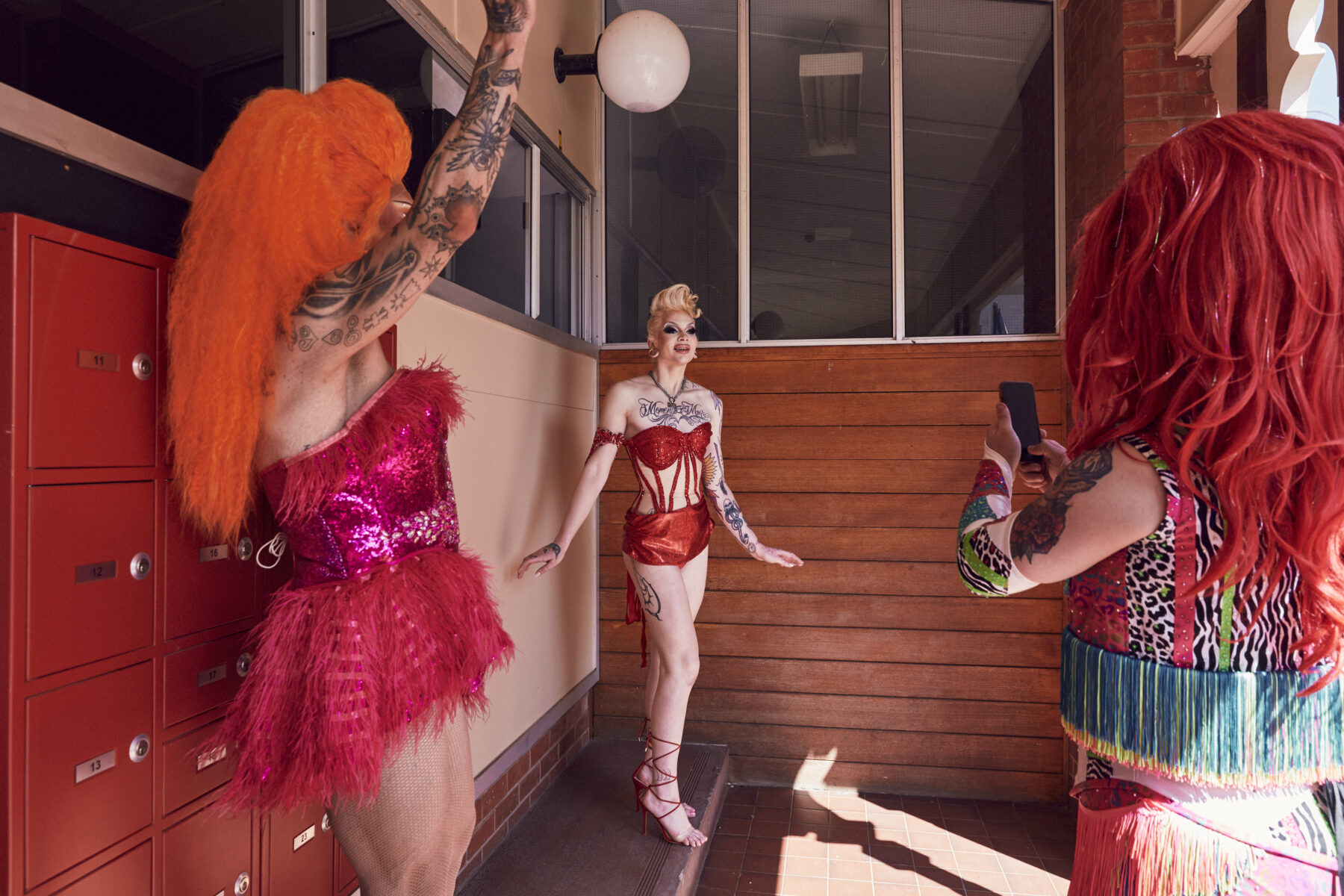
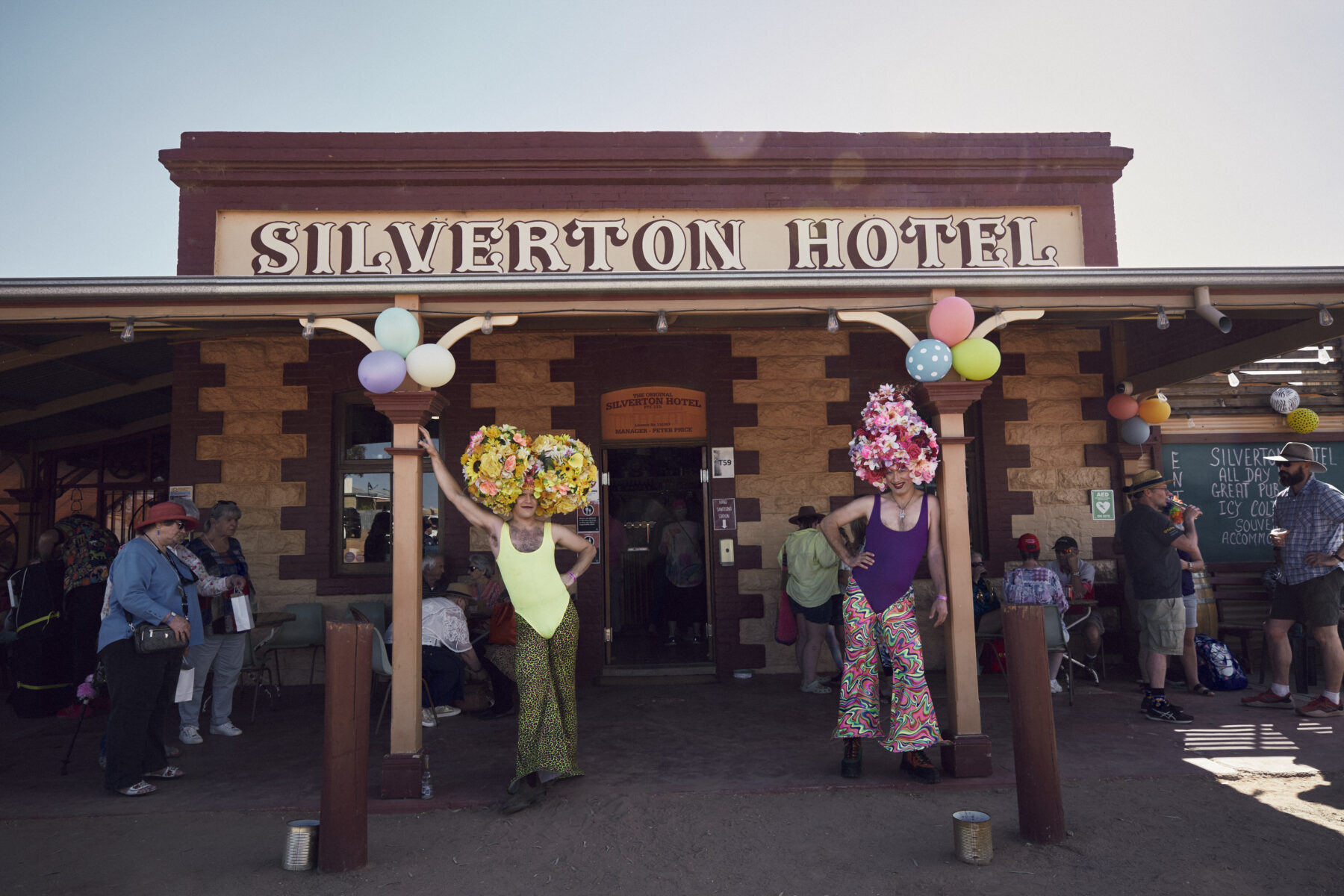
The last hurrah
It’s Sunday evening as the last Broken Heel Festival draws to a close. Gone is the excitement that powered the Silver City Stiletto Train that ferried the revellers here last Thursday, replaced by a strangely celebratory melancholy. Could this really be the last Broken Heel? Esther La Rovere needs a break – the Palace Hotel is groaning for those renovations – but she believes Broken Heel will come back. The people will insist upon it, will make it happen like they did in the very beginning.
It’s a new era, both in Broken Hill and out there in the world, a place, as one Broken Hill civic leader proclaimed in 1944, ruled by “neurotics, psychotics, homosexuals and people who do strange things”.
With the two remaining mines almost exhausted, Broken Hill’s second life as the drag capital of the outback is only just beginning. Boothby, one thinks, would approve.
“My kids have been on my coming-out journey with me, since I came out in 2021,” Richie says. “I remember the day I took each aside and told them. They think nothing of being gay or in drag – kids these days are a whole different breed. My son’s response was very wise. He said: ‘You can express yourself however you like, Dad. It doesn’t matter what I think’.”

